
1 ISSUE
PLAYS WITH THE KIDS. HE CUDDLES WITH THE DOG.

HE
HE SWINGS FROM THE CURTAINS LIKE TARZAN. HE’S DAMN NEAR PERFECT.



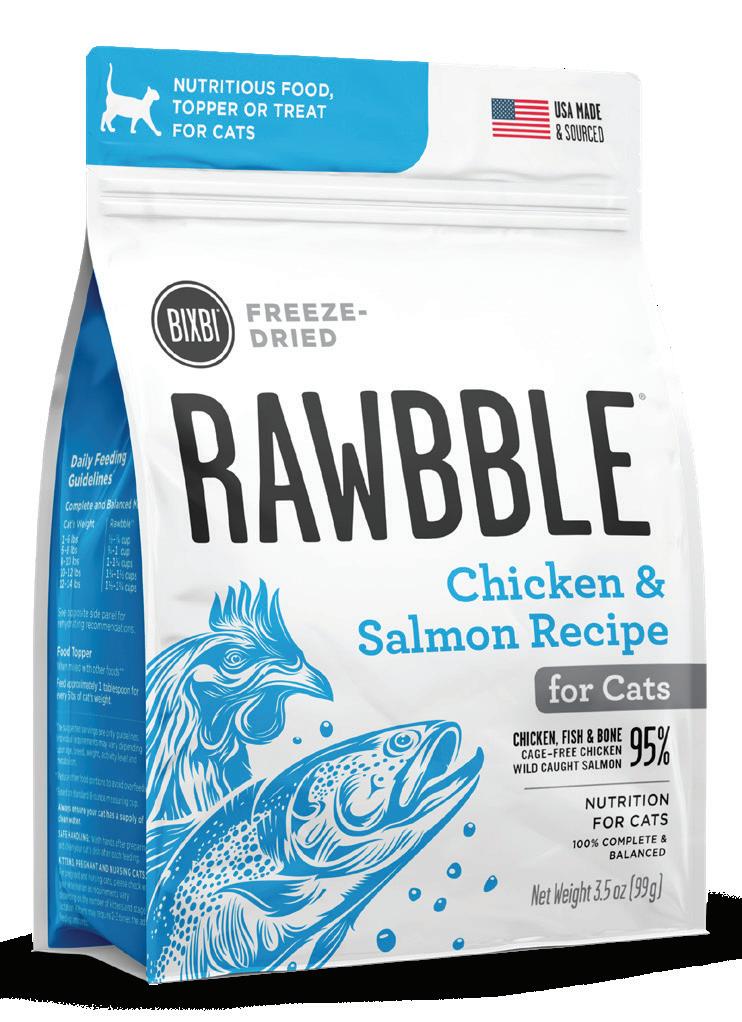


95% MEAT, ORGANS & BONE. SUSTAINABLY SOURCED PROTEINS. GREAT AS A TREAT OR MEAL TOPPER.
BY BIXBI—ISSUE NO. 1
PUBLISHER
James Crouch
EDITOR-IN-CHIEF
Skratch
EXECUTIVE EDITOR
Chris Nelson
MANAGING EDITOR
Alynn Evans
ART DIRECTION & DESIGN
Justin Page
COPY EDITOR
Christian Glazar
CONTRIBUTING WRITERS
Alynn Evans, Alyssa Hurst, Sunshine Lemontree, Jenni Miller, Chris Nelson, Elana Scherr
CONTRIBUTING PHOTOGRAPHERS
Chris Nelson, Tayler Smith
CONTRIBUTING ARTISTS
Johanna Breuch, John Battalgazi, Lucia Heffernan, Abbas Husain, Emily Paquin, Katherine Streeter, Polina Whitetail, Ravi Zupa
MARKETING
Noelle Betkowski, Lindsay Kunetka, Brianna Prosser, Becca Roat, John Webster
BIXBI Pet PO Box 7327 Boulder, CO 80306 303.666.1070
No part of this publication may be reproduced, copied or transmitted in any shape or form without written consent from BIXBI.
For general inquiries, story and photography submissions, contact us at purrideas@bixbipet.com.

© 2022 copyright BIXBI
Printed in the USA
2 DROOL — ISSUE NO.5
PURR — ISSUE
A CAT, A BRAVE LITTLE TABBY WHO HELPED MAKE AVIATION HISTORY. “
8
(C)attitide Adjustment
How cats changed one person’s life, career and perspective for the better.
62
The Maine Coon
North America’s oldest and largest cat breed proves the bigger the cat, the more love to give.
22
Catching Fireflies
A drunken tale of a new tabby daddy.
40
4 Doses Over 84 Days
How an unapproved drug is saving cats from a once-fatal disease.
48
Gonzo Vision
See life through the collar cam of an outdoor cat.
72
Paree-Londres
Early aviators needed nine lives. No wonder they invited cats along for good luck.
Love & Death
The duality of black cats.
On the Cover
Illustrator Abbas Husain of Bag man Studios, Apex Predator II. See more of his work on page 18.
Issue No. ONE
82
72 “BY ALL ACCOUNTS, PAREE-LONDRES LOVED TO FLY, WHICH WOULD BE UNREMARKABLE IF PAREE WAS A BIRD, OR A BAT, OR EVEN A DOG, BUT PAREE WAS
3PURR — ISSUE NO.1

LETTER FROM THE EDITOR 4 PURR — ISSUE NO.1
FFor a long time, I believed humans had hurt me, but now I know that I was wrong, and that humans are complicatedly wonderful creatures, and it’s why I’m overjoyed to now be at Purr . I’m Skratch, the editor-in-chief of this magazine, and I was born under a thick cover of white yarrow in New York City’s Central Park.
For several weeks, my mother and my littermates lived there in peaceful sanctuary, until one night when mom went out to hunt but never came back. The litter abandoned our nest one by one, scattering throughout the city, and left me waiting under the only shelter I’d known until hunger drove me out onto the pavement. After failing to snatch food from a few street carts, I walked down an alley behind an Italian restaurant called Carmine’s, did a little dumpster diving, and discovered an insatiable love for spaghetti bolognese.
For two years I thrived in that alley, napping through noisy days, chowing down through gluttonous, glutenous nights, and avoiding thousands of yappy humans who existed in the muted background of my life. One night, I earned the name “Skratch“ after a raccoon tried to steal my carbonara and left a scar on my maw. Then, one morning, I felt bony fingers wrap around my body, and when I woke up, I watched the metal door of a crate close behind me. As wildly as I clawed, it didn’t matter; some doctor stuck me with a needle, and I fell into a deep sleep. Miraculously, I woke up back in my alley, feeling very fortunate — until I noticed a huge notch taken out of one of my ears.

You call it “TNR,“ or Trap-Neuter-Return, which I now understand is a compassionate program for
feral city cats to curb population booms, but for a young stray who was spayed without consent, it was horribly traumatic. After that day, if a human came near me, the hair on my back stood up, my claws came out, and I couldn’t help but hiss. Life in Manhattan was never going to be the same, so I decided to change my scenery, hitching rides in the beds of trucks that were heading west.
After a few months on the road, I found myself in Taos, New Mexico, and followed my nose into the backyard of the house of the two men who are now my best friends: Joseph and Ernest Jennings. The adorable, middle-aged spouses were dancing in their kitchen to Kylie Minogue, waiting for their lasagna to bake with a rich, brown crust. I peeked through their window, and when they saw me, I tore into the bushes, but then Joe and Ernie opened their kitchen door and left it ajar as they sat down for dinner. Slowly, I slinked into the house, and when I did, they made me a plate of lasagna and put it on the floor.
Over the past few years, I’ve lived with the Jennings in their succulent-filled yard. I’ve eaten their delicious lunches and dinners, and I’ve learned to appreciate humans in a way that I never thought possible. My feral side is still hungry for adventure, so when the sun is up, I roam through the desert or climb up into the mountains, but when darkness falls, it’s nice to know that I have a home waiting for me, with humans who take care of me and love me. Without them, I don’t know where I’d be — but I wouldn’t be here, in the pages of Purr. Enjoy our first issue.
Claws out, Skratch
5PURR — ISSUE NO.1

SHE HAS THE SWEETEST PURR. SHE NEVER SCRATCHES THE FURNITURE. SHE MAKES ME KEEP EVERY BOX WE GET. SHE’S DAMN NEAR PERFECT.




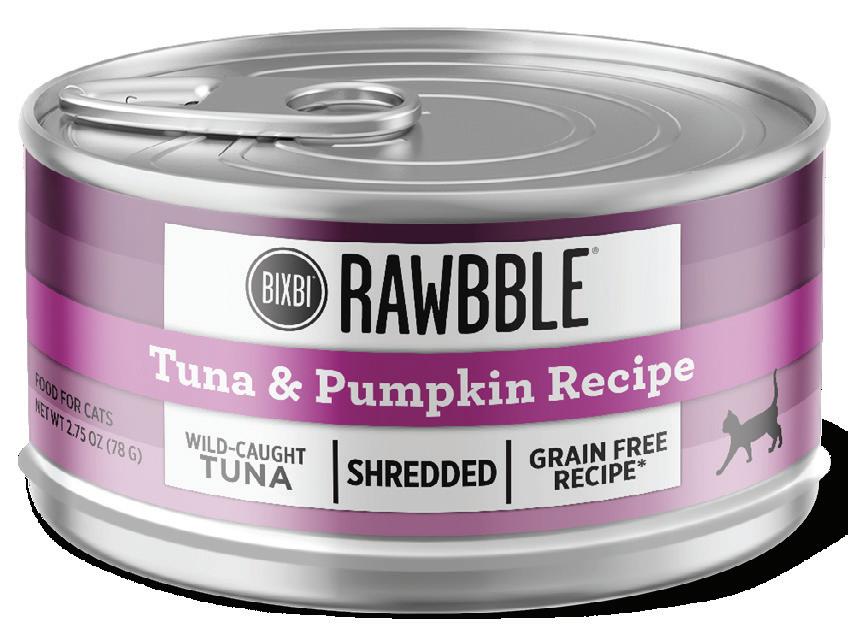

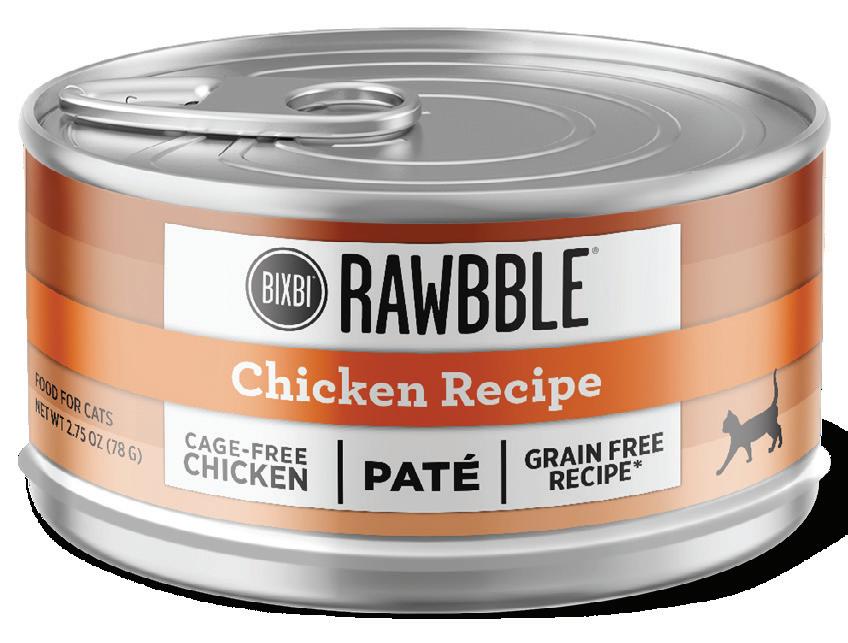

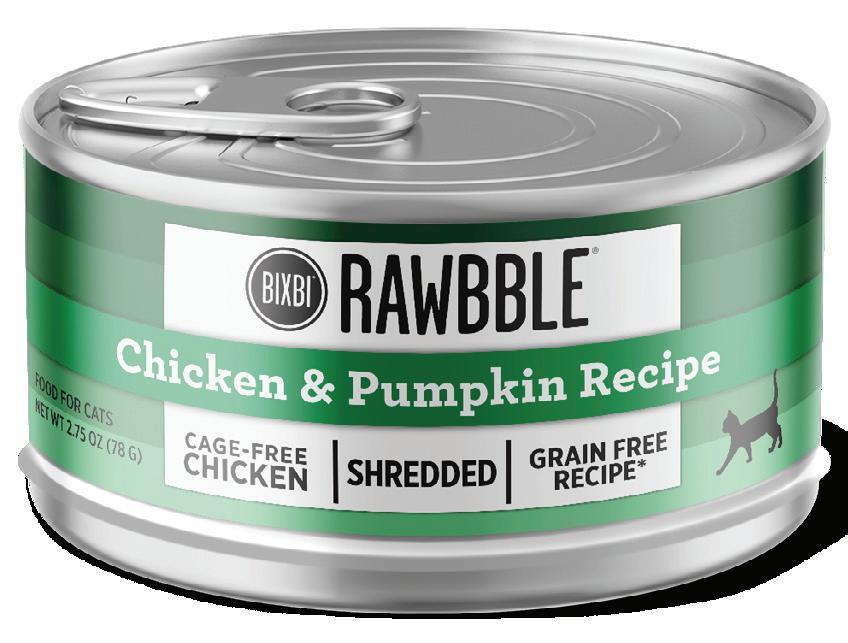

SUSTAINABLY SOURCED PROTEINS. NO GRAINS OR FILLERS, EVER. SAVORY PATÉ OR MEATY SHREDS.
WORDS BY JENNI MILLER PHOTOGRAPHY BY TAYLER SMITH
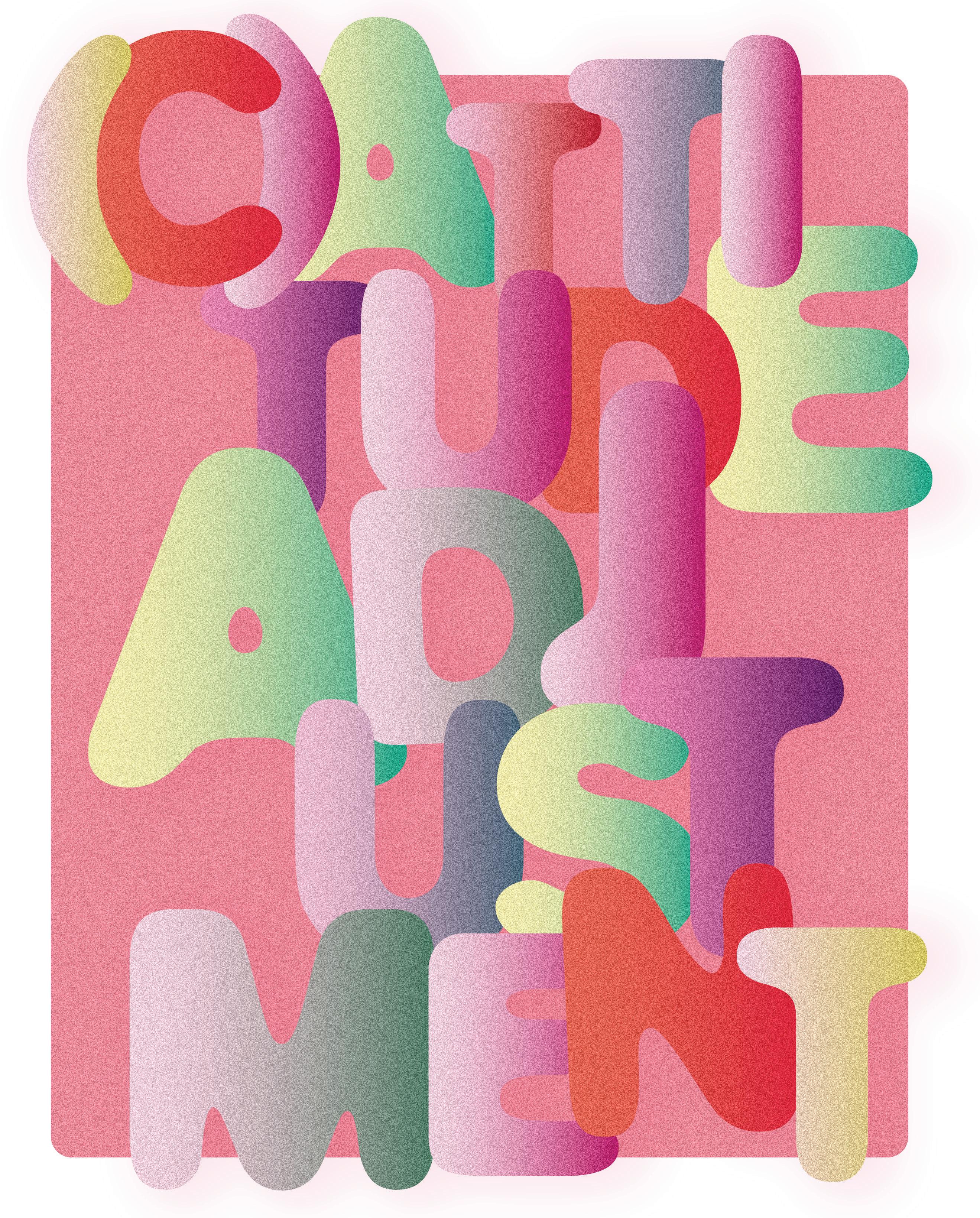
8 PURR — ISSUE NO.1 HOW CATS CHANGED KRISTIINA WILSON’S LIFE, CAREER, AND PERSPECTIVE.

9PURR — ISSUE NO.1

10 PURR — ISSUE NO.1
A cat allergy kept Kristiina Wilson from getting too close to cats for much of her life. In her junior year of college, after her allergy disappeared, a gray tabby changed everything.
Animal behaviorist Kristiina Wilson’s first foray into cat companionship was very nearly her last.
During her junior year of college, Wilson’s roommate brought home a silvery gray tabby who’d gotten the name Walkie Talkie from her previous owner, a painter, due to her raspy little meows and predilection for walking in his fresh paints. Wilson, who was vigorously allergic to cats at the time, tried to avoid her furry new pal’s affections to no avail. “She
wanted to sleep with me and be in my room and just be with me all the time,” Wilson tells us as we sit in her East Village apartment surrounded by her clowder of kitties. “And I really liked her, but I was coughing all the time.”
As college kids are wont to do, Wilson ignored her mounting health problems until things got, well, a little gross, and she was forced to go to the doctor, where she was diagnosed with walking pneumonia and given intravenous antibiotics. By the time the ordeal
had passed, Wilson was no longer allergic to Walkie Talkie — or to any of the countless cats she’s rescued, fostered, studied, or adopted in the years since.
Wilson’s blossoming friendship with Walkie Talkie, who eventually came to be known simply as Kitty, unlocked something in the young photographer that she didn’t know had been missing. “I learned so much from her,” Wilson says. “She taught me how to be affectionate with pets and people; I learned so much from her about body
language and communication and just being open with animals and people. It really opened me up in a lot of ways.”
Wilson and Kitty lived together for several more years, until Wilson moved to Finland to pursue her graduate studies in photography. It seemed unfair to bring a cat to Europe, so Kitty moved to the suburbs of Virginia to live with Wilson’s parents, who soon discovered they loved cats too. Once Wilson returned to NYC, she didn’t want to make
11PURR — ISSUE NO.1
Kitty give up the spacious house and backyard she’d grown to love, so the feline formerly known as Walkie Talkie spent her golden years being doted upon by her human grandparents, romping outside, and chatting away until the ripe old age of 16.

Once Wilson was settled back in New York City, she was ready to rejoin the ranks of cat companions. In addition to pet-sitting and dogwalking, she worked with local rescue groups and the Animal Care Centers of NYC to help socialize feral cats. “Back then, in the early 2000s, nobody was teaching you how to do this, so I just kind of figured out how to sit quietly with the cats and let them get to know me and let them do it on their own time,” Wilson says.
One night a friend came over to find Wilson sitting stock still in
the middle of her living room, her hands outstretched and covered in goopy turkey-flavored baby food while a feral cat cowered behind her sofa. (Wilson has been a vegetarian for most of her life.) These and other techniques she picked up through trial and error and networking with other rescuers helped her successfully socialize a number of cats; she kept one named Muffin, then added another named Emmi to the pack a few years later.
Meanwhile, Wilson worked steadily as a sought-after fashion and beauty photographer for magazines and agencies around the globe. She frequently incorporated animals into her shoots, whether it was her own cats sneaking onto set or using a farm sanctuary as a shooting location, but helping animals
was never a career goal in and of itself. However, in the past five years or so, social media clout became more of a factor in getting professional photo assignments than craft or years of experience. All too frequently, social media “shout-outs” were offered in lieu of payment. Still, it took a long time for Wilson to consider switching careers at all.
Wilson says being a photographer was her whole identity. “I just did cat work on the side to give back and to be of service, and it’s something just for me, but it was never something I thought that I could do as a job.”
In 2018, she applied to Hunter College Animal Behavior and Conservation Program on a whim the week before applications were due; she is currently completing her Master’s thesis on “the effect
As an accomplished photographer, Wilson never thought she could — or would — pursue cat behavior as a career. Slowly but surely, every cat Wilson interacted with pushed her to pursue the dream she didn’t know she had.

12 PURR — ISSUE NO.1
IT
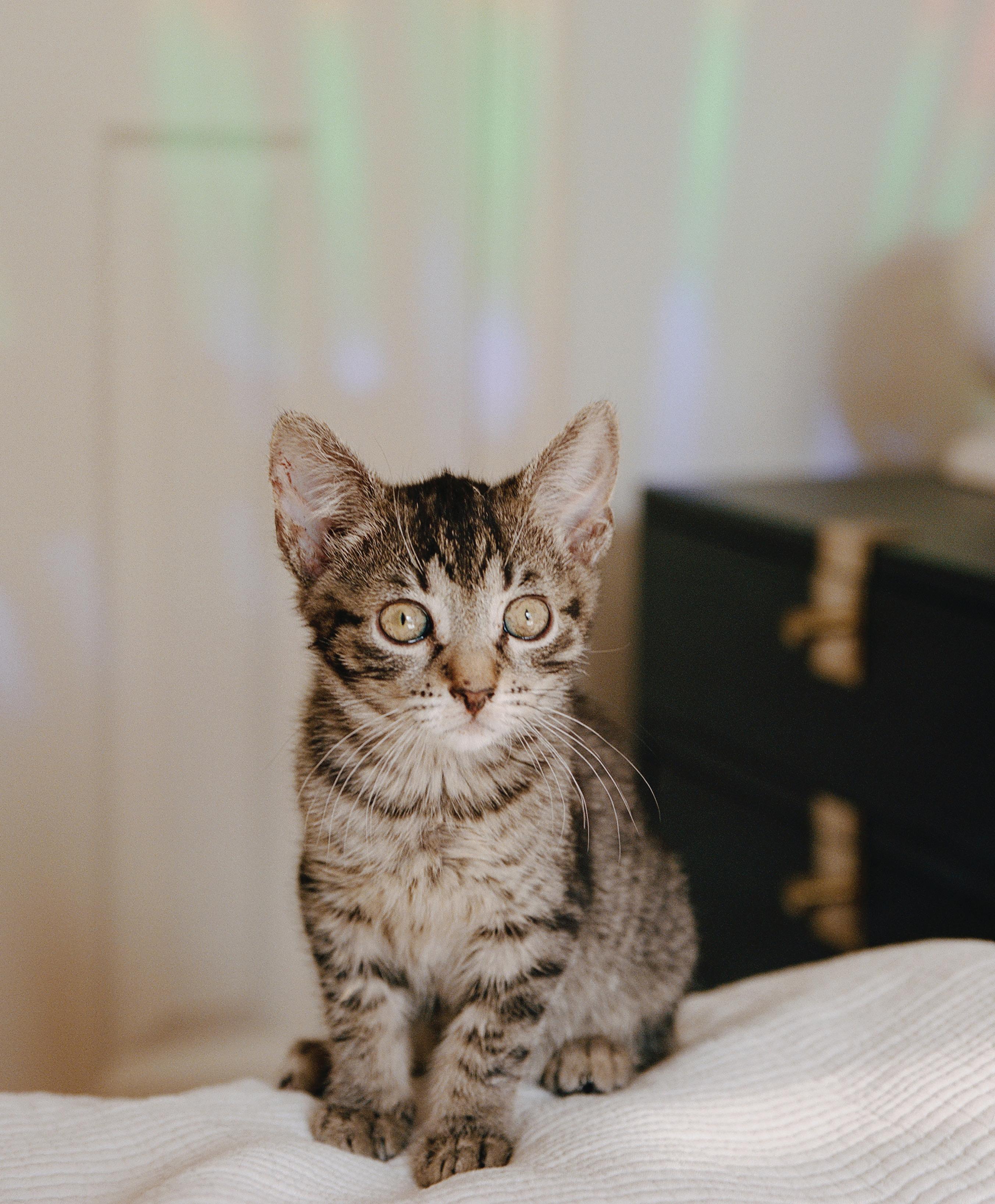
WAS NEVER SOMETHING I THOUGHT I COULD DO AS A JOB. 13PURR — ISSUE NO.1



WHILE PSYCHOLOGISTS STUDY ANIMALS TO LEARN ABOUT HUMANS, THE REVERSE IS ALSO TRUE. 14 PURR — ISSUE NO.1
For many, it’s hard to believe there is a whole field of study dedicated to animal behavior. However, if we take the time to learn more about how other living beings navigate the world, the more we learn about everything.
of fluorescent light flicker on the stress behavior of shelter dogs.” She also works as a freelance cat behaviorist and offers clients advice on everything from litterbox problems to socializing chilly kitties on her website, cattitude-adjustment.com.

What some laypeople may not realize is that animal behavior falls under the umbrella of psychology, and while psychologists study animals to learn about humans, the reverse is also true. Having a cat — even a cat you adopt from a shelter, even having multiple cats — isn’t usually as demanding and all-encompassing as rescuing, socializing, and/or fostering cats. Wilson’s cat crew has waxed and waned over the years as pregnant mama cats arrive; bottle babies are weaned and adopted out; and others shuffle off this mortal coil. At the time of this writing, Wilson and her wife Ally share their duplex apartment in the East
Village with 10 cats, along with three foster cats: a sleek black cat called Mama and her two kittens, a mirror image named Shadow and the stripy, perpetually surprised Ghost, who are on their way to their forever home imminently.
Steve B., a 12-year-old blackand-white cat named after actor Steve Buscemi due to the somewhat bulging eyes he had as a kitten, rules the roost; Wilson, who’s had him since he was two days old, refers to him as her “number one guy” and has been documenting his hijinks on Instagram, @thedailysteveb, since 2016. During the pandemic, Wilson decided to experiment with teaching her cats to use speech buttons, as seen on speech pathologist Christina Hunger’s @hunger4words Instagram account, with Stella the talking dog (featured in Drool issue 04). Steve B. learned how to use the speech buttons in four days
or so, and has since gone viral on TikTok with his demands to be let in the yard (“outside!” ) or for “snuggles,” “kittynip,” or “snacks” from his human companions. Wilson now offers an interactive online training course for humans curious about teaching their cats to use speech buttons on talktothebeans.com.
The other cats in the household include a female mini-Steve named Babby, whose given name Kuu means “moon” in Finnish, and who has her own Instagram account, @tinykittenfeminist; the weird sibling trio Beverly, Pam, and Uncle Dad (so named because he knocked up both of his sisters), who mostly hide with Little Marvin; Kevin, a former street cat with feline immunodeficiency virus (FIV) who came by Wilson’s yard to visit the kittens he’d fathered, and eventually realized an indoor life meant delicious treats and endless belly rubs;
15PURR — ISSUE NO.1
Mimi, who is 12 years old and is a great enforcer of rules, always ready to dole out a whapping or a hiss despite her lymphoma, for which she is receiving chemo; Kitten Man, a burly 3-year-old who loves to hunt; and 18-year-old Samba, an incontinent gentleman who spends his days snoozing in the sunshine or in a llama-shaped bed, with nary a thought to the owners who gave him up a few years ago to move abroad.
When asked why she went from an everyday cat owner to someone
passionate about helping animals, Wilson has a thoughtful response: “The desire to work with animals comes a lot from past trauma, that dealing with animals tends to be a lot easier than dealing with people,” she explains. “People who have dealt with past trauma also tend to want to help others, because they’ve been in a situation where they needed help and they didn’t get it, or whatever. So, they want to help people have a voice or help those who are in need. But they have a tendency — at least
the people who end up working with animals [do] — to not want to put that towards people or find it more difficult to deal with people. I think that’s probably true for me; I wanted to be of service. I wanted to have pets, but I also really wanted to do something, to give back and to be helpful and to not have my whole life be about making money or doing whatever it was I was doing for work at the time … to just do something to be useful, and to help other living beings, which for me is the purpose of my life.”
For Wilson, helping cats has allowed greater compassion for all living beings, including people.
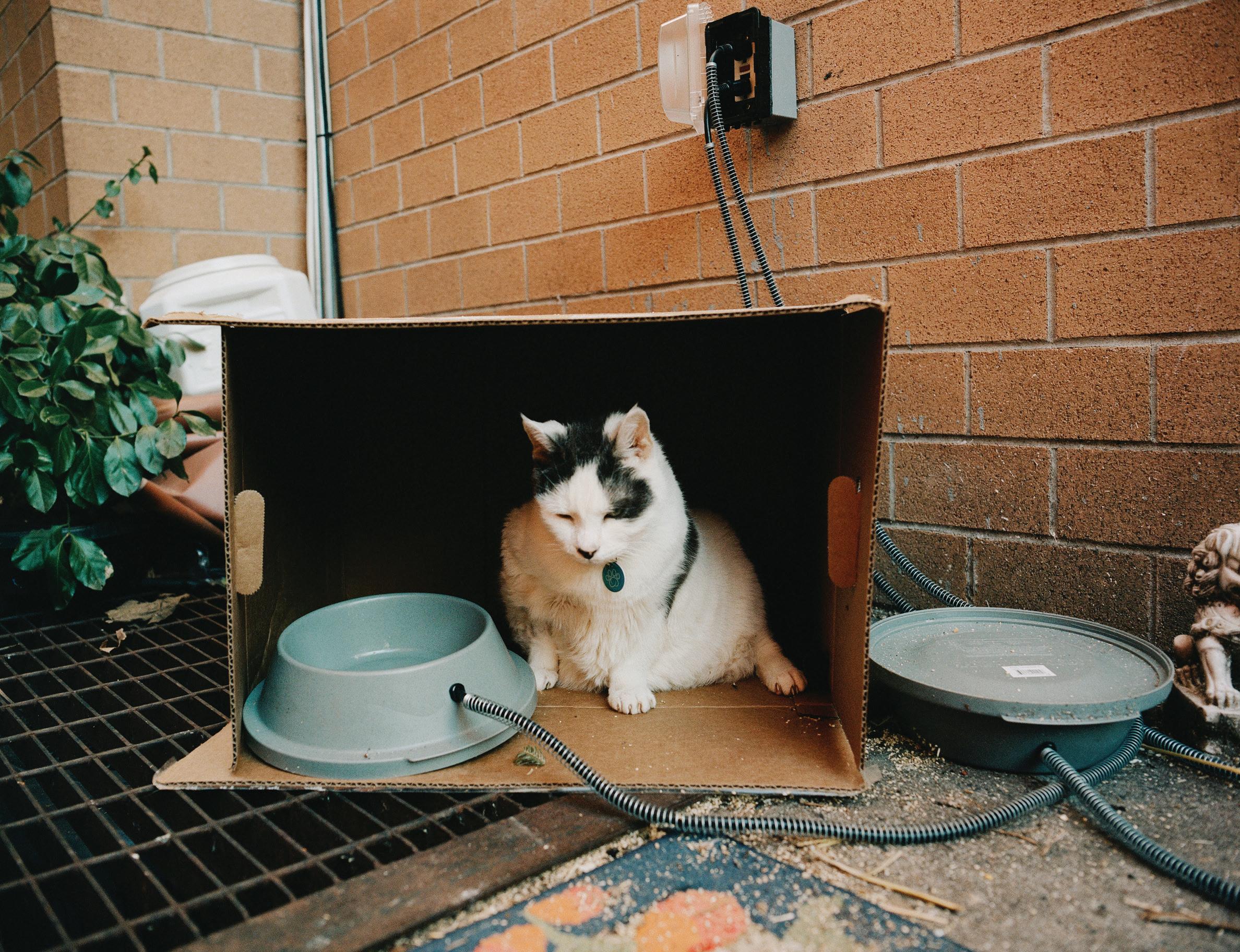
16 PURR — ISSUE NO.1

TO HELP OTHER LIVING BEINGS, WHICH FOR ME IS THE PURPOSE OF LIFE. 17PURR — ISSUE NO.1
@bagmanstudiosFEATURED ARTIST: ABBAS HUSAIN YOU CAN ILLUSTRATE A CAT DOING ANYTHING , AND PEOPLE ARE LIKE “YEP, THAT MAKES SENSE FOR A CAT.” “ 18 PURR — ISSUE NO.1
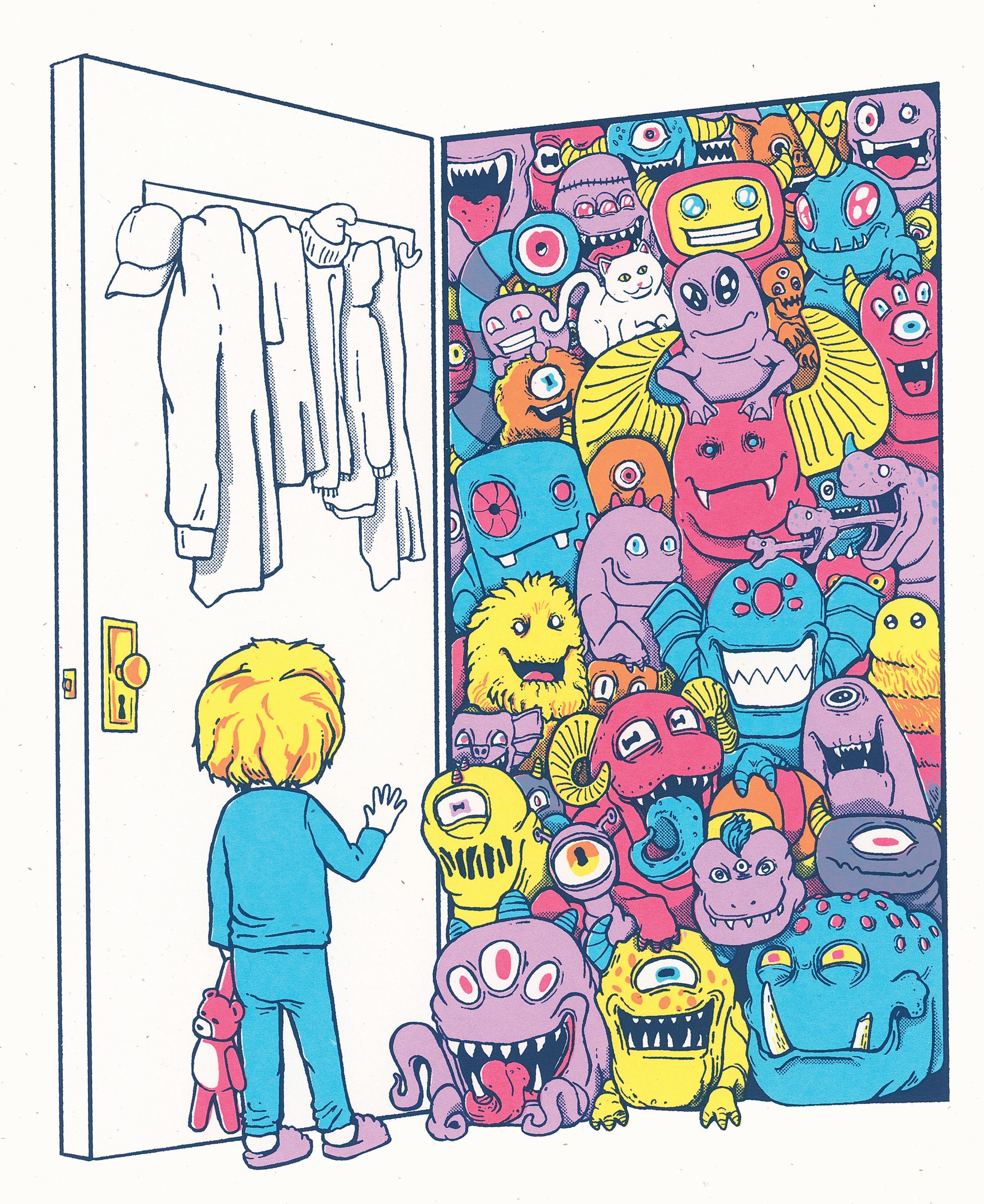
19PURR — ISSUE NO.1
Abbas Husain
In 2016, Abbas Husain started Bagman Studios, where he began selling his handmade screen prints. He learned that a funny thing happens when you start sharing art you enjoy making: people connect with it in ways you never imagined. Though he’s not a serious person, Husain spent many years making serious art. It wasn’t until he let that go that he found his light-hearted pieces to be more authentic and received with unexpected meaning. While Husain would like to think he’s in charge of Bagman Studios and his own life, it is quite apparent that Cleo, his 15-year-old cat, runs the show. Husain and his partner adopted Cleo in 2018 with a broken tail. The veterinarian suspects it’s the result of a fall … when she fell from Heaven, of course.



20 PURR — ISSUE NO.1
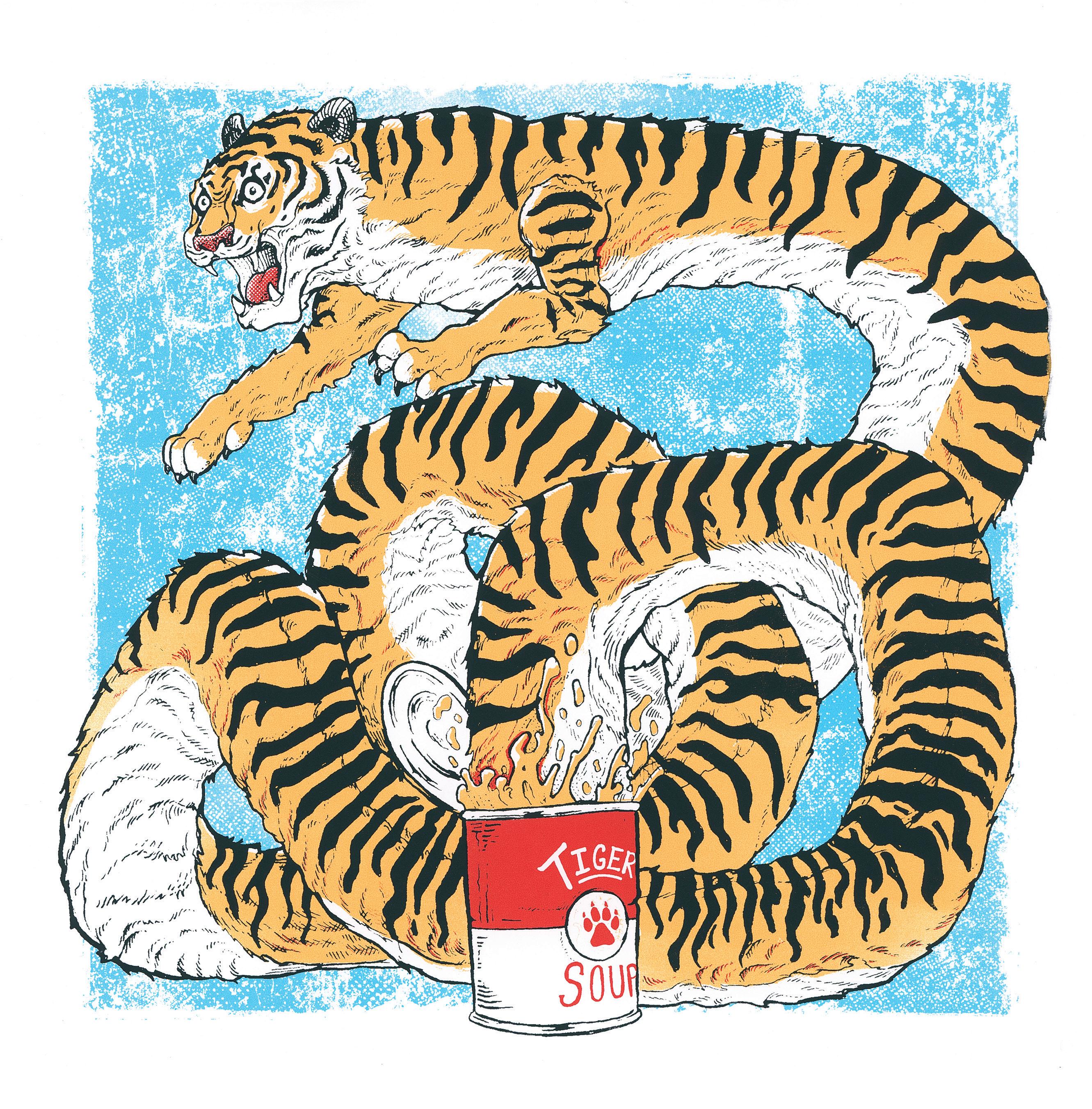
21PURR — ISSUE NO.1


22 PURR — ISSUE NO.1
BY CHRIS NELSON


A DRUNKEN TALE OF A NEW TABBY DADDY WORDS & PHOTOGRAPHY
23PURR — ISSUE NO.1
The doorbell rang repeatedly, echoing through my beer-soaked dreams. It was the morning after the Fourth of July, and I had celebrated America’s birthday in the woods of a small town in Michigan, listening to a local band twang out bad country songs as I chugged cheap brew flowing from a sweaty keg into half-gallon milk jugs. Despite an oppressive hangover, I managed to roll out of bed, stumble down the hallway to my front door, squint through the peephole, and see my neighbor, Mandi, smiling
and holding a small plastic animal crate. I opened the door and stared into the big amber eyes of a tiny orange tabby and, in that moment, remembered that I had drunkenly agreed to take in the kitten, who was spotted as she tried swatting fireflies out of the night sky.
It’s been 10 years since I got my sweet girl, Luci — short for “Luciole,” which is French for “firefly” — and she’s been the sweetest, most loving friend I could hope for. I didn’t know what to expect of my first cat, but I most certainly didn’t think she’d have
Tas much moxie or swagger as she does. She saunters up to strangers, sniffs their faces with whiskers wiggling, and then tenderly licks their eyelids. I still melt when I hear her chirpy, soft-spoken meow that she never really grew into, and one of my favorite things to do is rub her big, pink belly that hangs low like cow udders. Luci not only changed my life but also the lives of a few of my most important humans. Two of my best friends are now proud cat dads to the credit of Luci, who charmed them with her easygoing attitude, and
my mother, who is horribly allergic to cats and fomented a childhood aversion toward felines, never hesitates to say, “Luci is the first cat I’ve ever loved.”
The cat and I have grown close over the past decade, but admittedly we had a rough start. In the first 15 minutes of our cohabitation, she silently slinked between my feet, and I accidentally punted her halfway across the room; I immediately went out and bought her a collar with a bell on it. Then she introduced me to her claws by
24 PURR — ISSUE NO.1
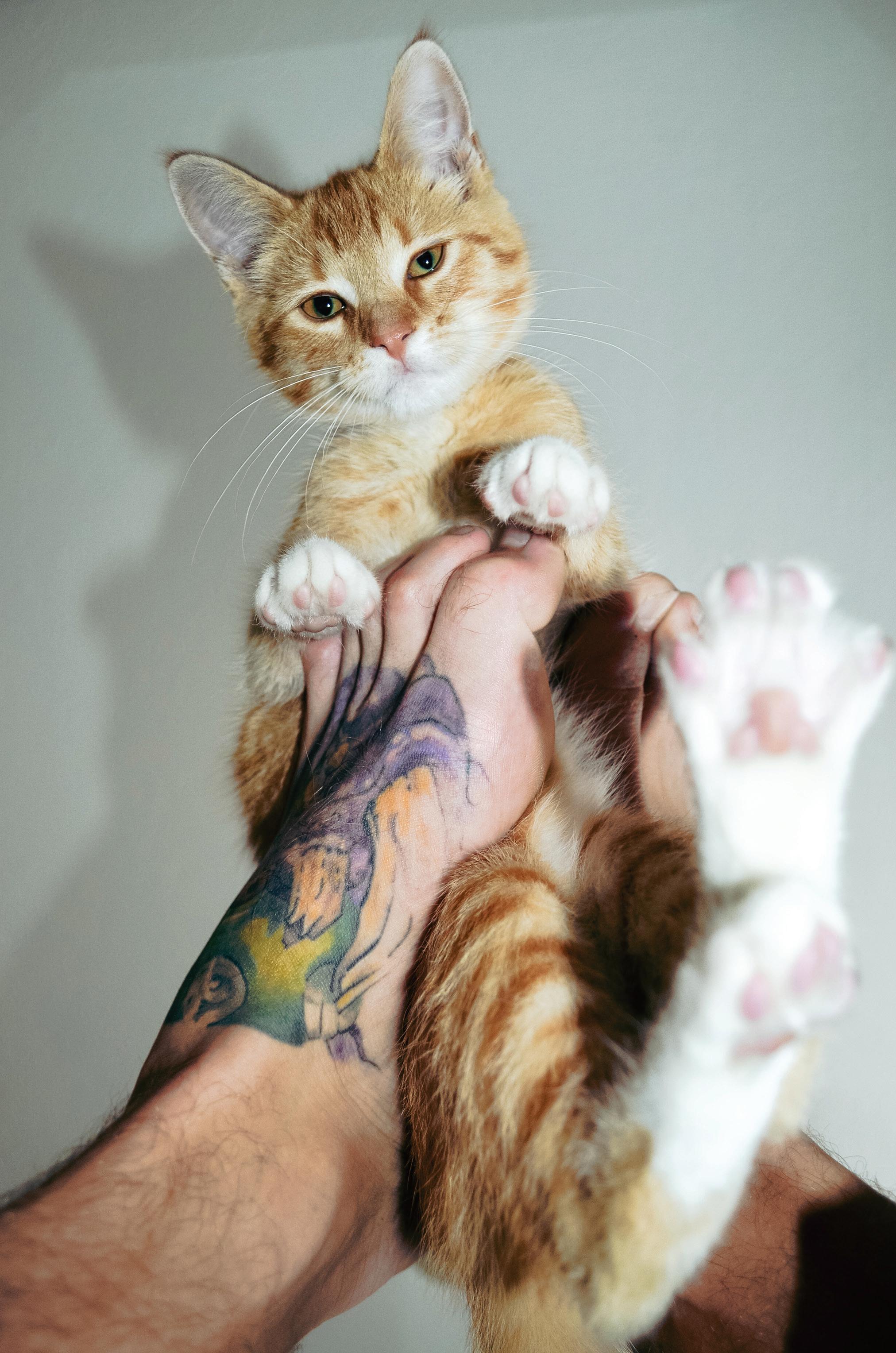
25PURR — ISSUE NO.1

IF I HAD TO DESCRIBE HER TASTE IN FOOD , IT WOULD BE LIKE THAT OF A DRUNKEN COLLEGE GIRL ON A LATE SATURDAY NIGHT... 26 PURR — ISSUE NO.1
climbing up my body, from ankle to ear, leaving behind a trail of thin, bloody scratches. When it was time for bed, I tried to keep her outside of my room, worrying that in my sleep I might roll over and squish the tiny tabby, but a few seconds after I closed my door, she sprinted down the hallway and slid into the door at full speed. I tried to ignore it, but then she started pawing under the door jam and knocking her skull against the wood, so I gave in and let her into bed, where she slept on my throat, curled up into a tight little ball.
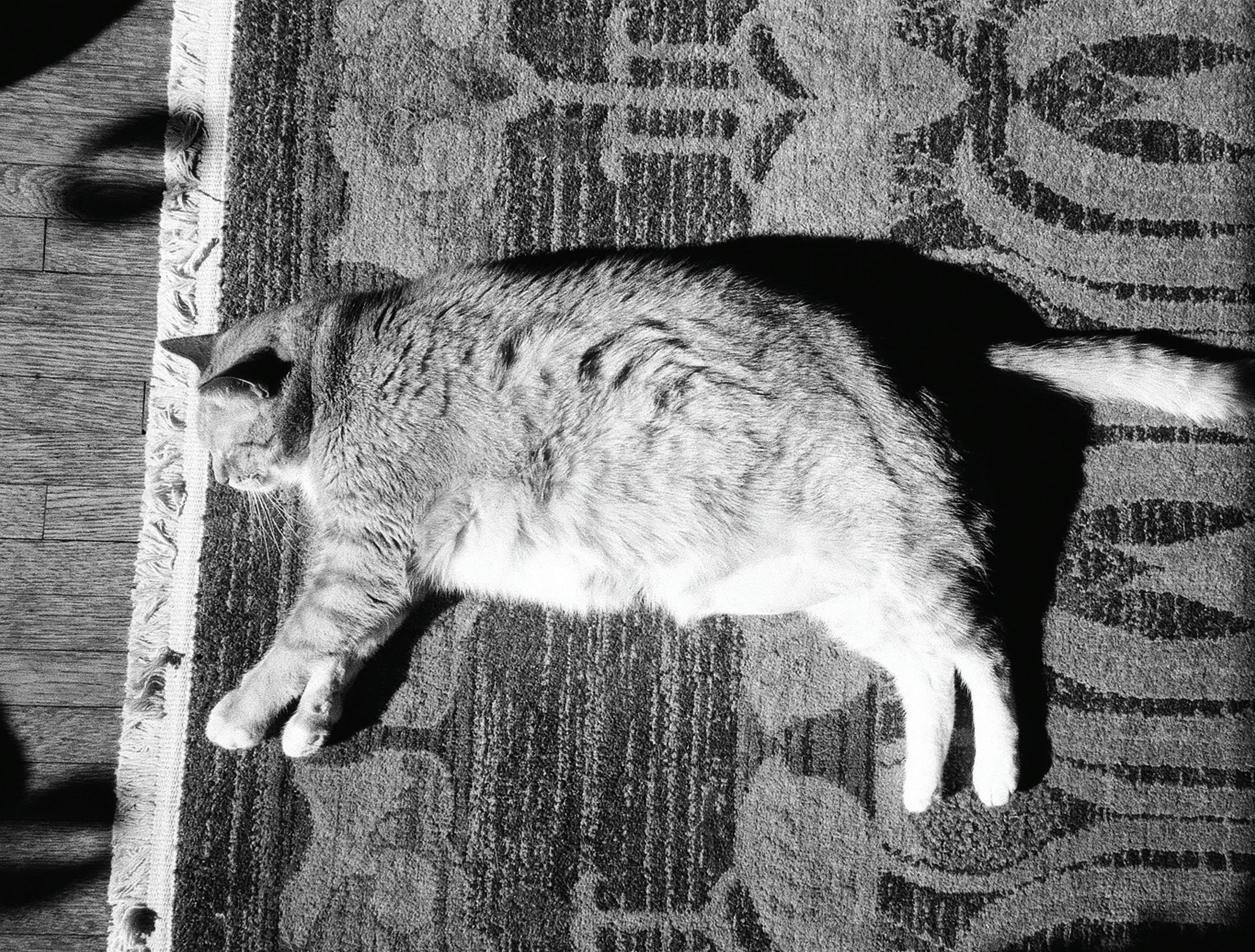
The next morning, I heard a
strange squeaking sound and discovered Luci on the kitchen counter, attempting to eat packing styrofoam. It didn’t take long for me to realize that little Luci had a ferocious appetite, and a very selective and somewhat beguiling palate. If I had to describe her taste in food, it would be like that of a drunken college girl on a late Saturday night: Luci goes crazy for ranch dressing, marinara sauce, and anything from Taco Bell. And I mean it when I say that she goes crazy; get between Luci and a chalupa, and she will shoot you murderous side-eye, let out a
guttural hiss, and slowly unfurl her claws until you back off.
Luci’s wild side peeked out now and then, but I didn’t fully comprehend how feral she was until we moved from Ann Arbor, Michigan, to Long Beach, California, where hundreds of stray cats roam the streets and alleys. A well-known neighborhood cat, Zephyr, had the hots for Luci, and every day he came by the house to coo at her as she sunbathed on the windowsill, which caused Luci to go into a redmist rage and angrily chuff at him until he took off. One day when I
27PURR — ISSUE NO.1

28 PURR — ISSUE NO.1

THEIR ADORING LOOKS TURN TO DISGUST WHEN LUCI WAKES UP, PUSHES HER HIND PAWS AGAINST THE WINDOW, AND SPLAYS SPREAD-EAGLE TO LICK CLEAN HER BUTTHOLE. PURR — ISSUE NO.1
was at work, a neighbor called and — through his tired, panting breaths — told me that Luci had smashed through a window, gotten into a fight with Zephyr, and clawed off half of the tomcat’s face. Luci had a big bite gash on her back, which required a fabric drain to avoid abscess and a huge cone to keep her from licking the wound, but after that day we never saw Zephyr again. Coming off that incident, Luci
mellowed out a lot and has since spent most of her days sleeping in a suction-cup hammock that hangs in the front window. Passersby stop to gawk and take pictures of the adorable orange cat who contorts in her kitty dreams, but their adoring looks turn to disgust when Luci wakes up, pushes her hind paws against the window, and splays spread-eagle to lick clean her butthole. This effortless devilmay-care attitude is as hilarious
as it is inspiring, and over the last 10 years I’ve come to understand and admire Luci in ways that, as a lifelong “dog person,” I never would have known had I not drunkenly decided to become a “cat person.”
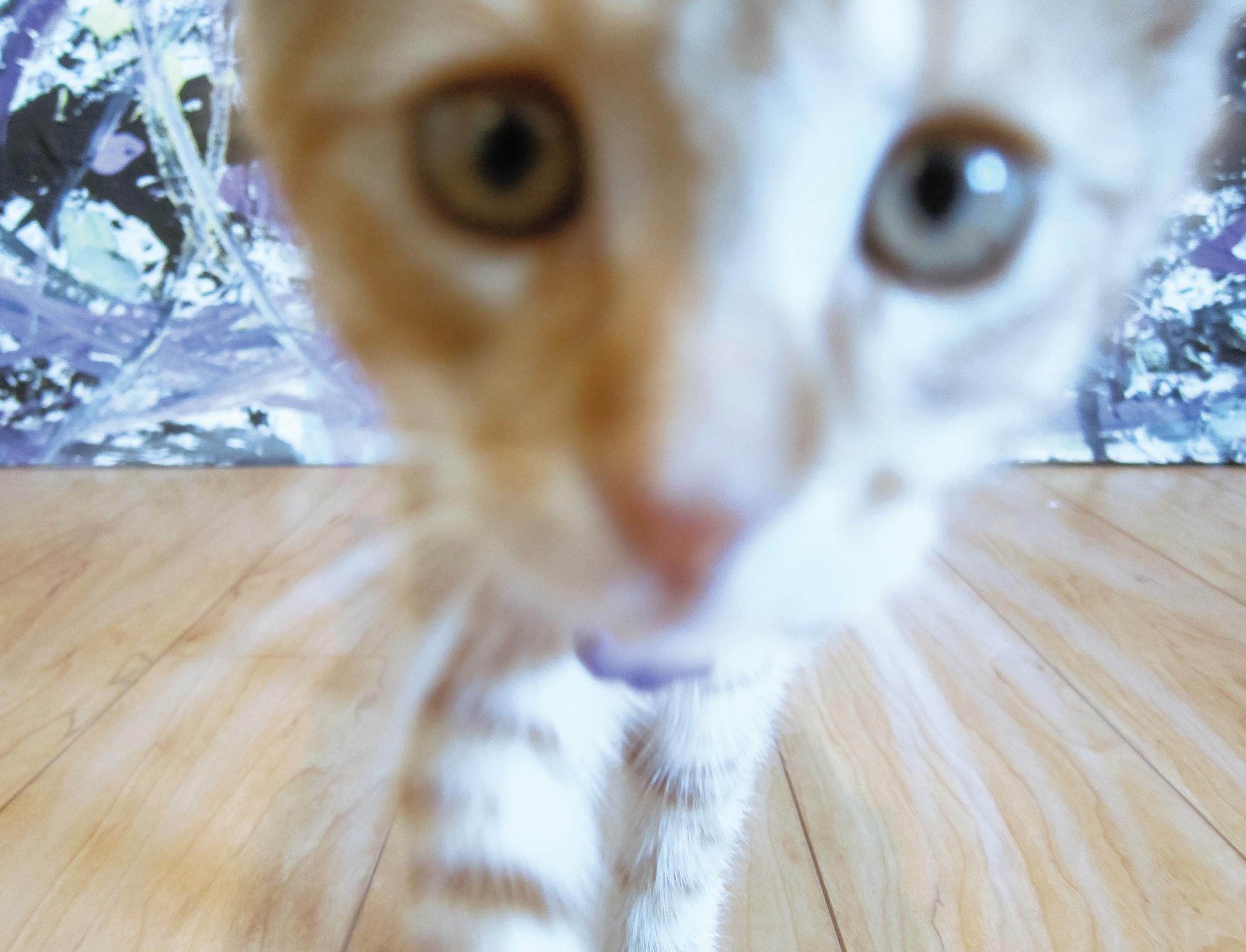
The sweet-faced, fireflycatching cat helps me appreciate the simplest joys in life, whether it’s an afternoon spent sleeping in the sun or a late-night order from Taco Bell. Her charmingly
indifferent attitude toward most things in life is in stark contrast to her darling compassion for me, and not a day goes by that I don’t deeply and truly appreciate her love and admiration. Ten years ago, if you had asked if I wanted to be a cat dad and I was sober, I would have laughed in your face, but thankfully that’s not how it played out for me and Luci, because she changed my life for the better and always.
30 PURR — ISSUE NO.1
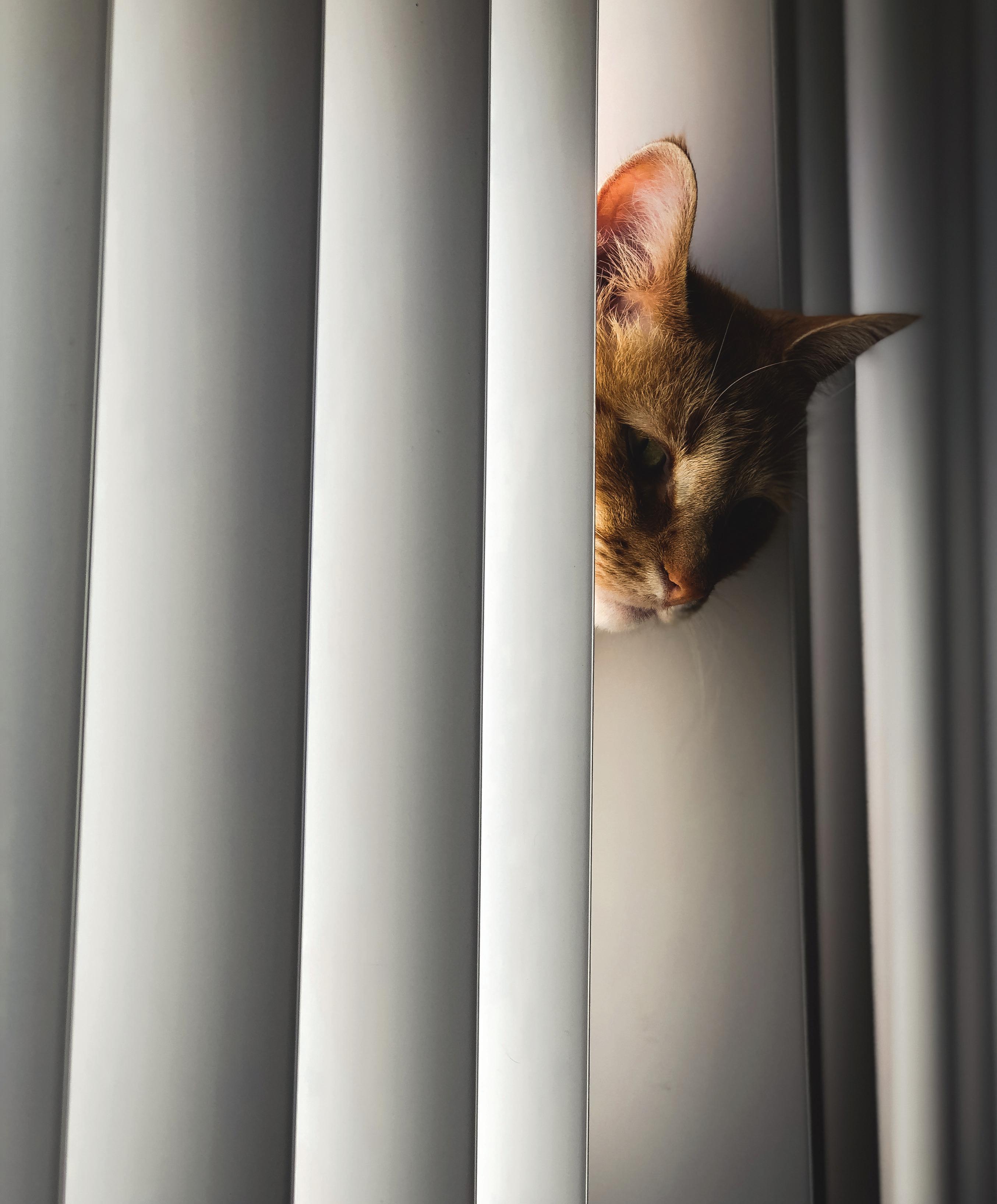
31PURR — ISSUE NO.1
@polina_drawsFEATURED ARTIST: POLINA WHITETAIL JUST TO BE KIND TO EACH OTHER , TO ANIMALS AND NATURE. AND THAT YOUR CAT CAN HAVE A LITTLE SALAMI. “ 32 PURR — ISSUE NO.1

33PURR — ISSUE NO.1
Polina Whitetail
When Polina Whitetail’s best friend asked her to draw a portrait of her family for a Christmas card, it sparked her to start making portraits of other couples and families. While this was a great way into an artistic career, she found it more stressful than enjoyable to have the responsibility of representing a person accurately. It wasn’t until Whitetail took a break from her art that she was able to shift her focus from commissioned portraits of people to something she truly loved: drawing pets, particularly silly cats full of personality. Through the years, Whitetail has dabbled in different mediums and changed her style, and she has recently been exploring the art of tattooing. Through all the exploration and experimentation, one thing remains constant: cats will always be at the heart of her work.

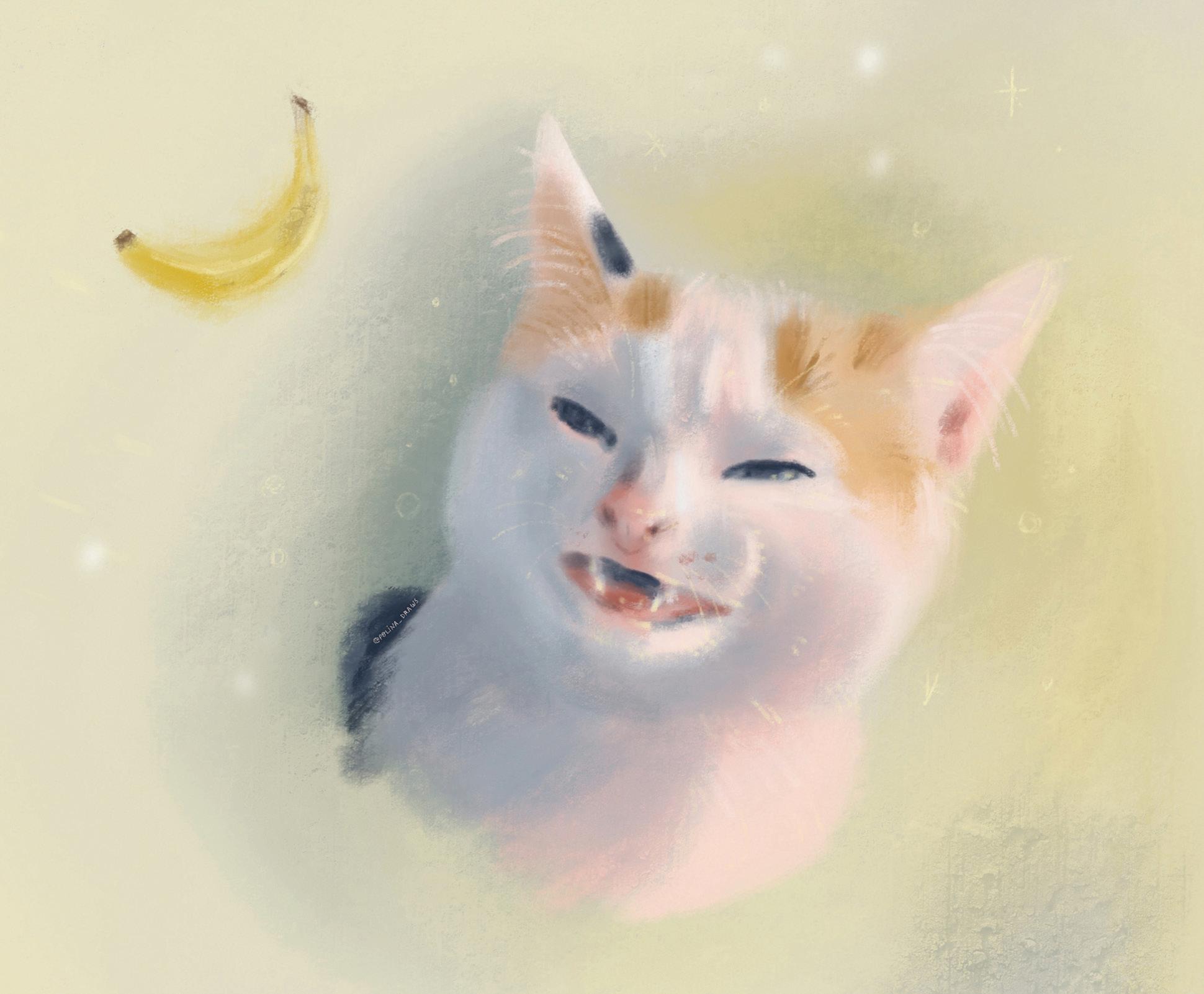
34
PURR — ISSUE NO.1

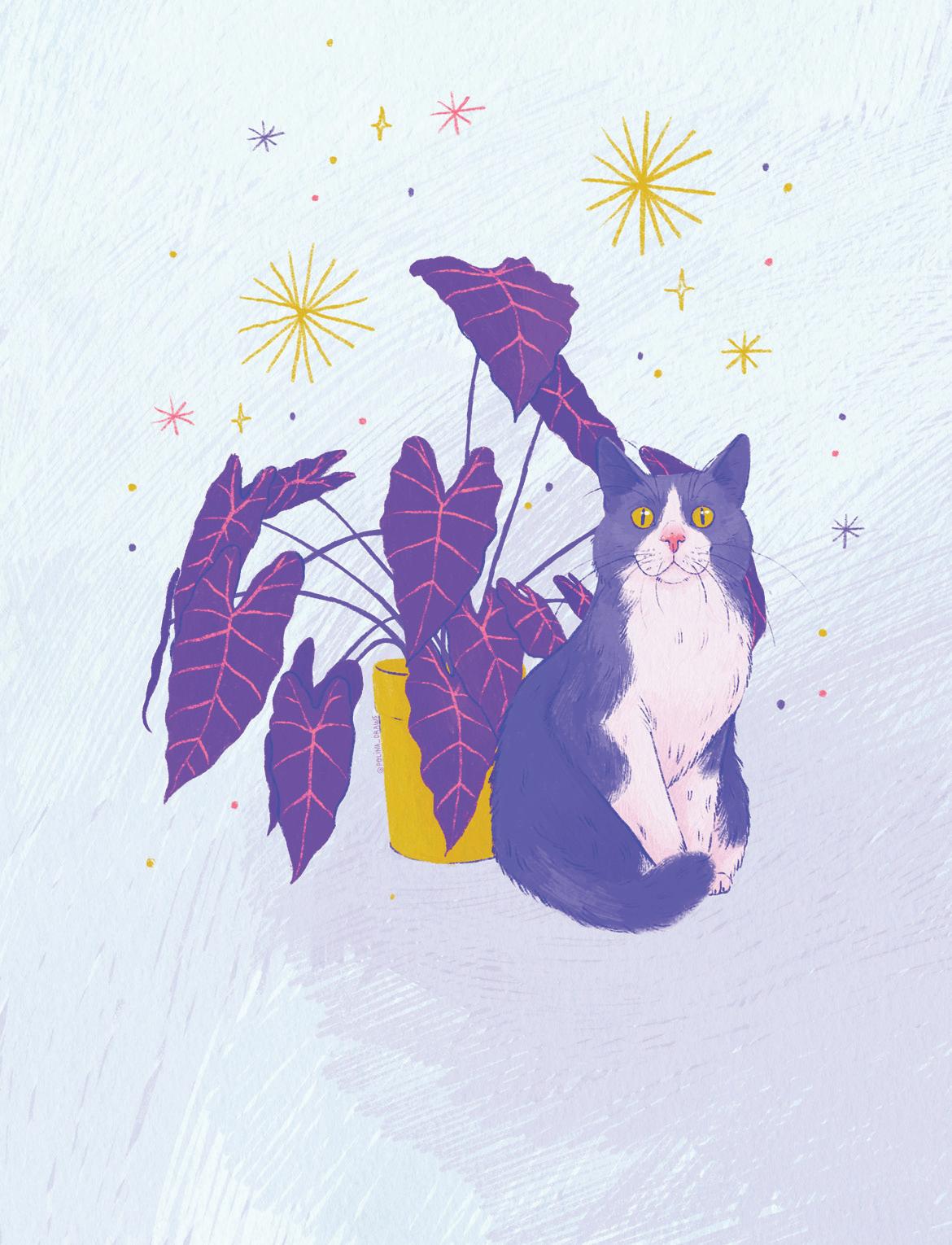

PURR — ISSUE NO.1

36 PURR — ISSUE NO.1
IS SAVINGCATS FROM A O N CE-FATAL DISEASE
BY ALYSSA HURST X ILLUSTRATIONS
BY JOHN BATTALGAZI

DOSES OVER 84 DAYSWOH NA PANU P R O V E D DRUG
. 37PURR — ISSUE NO.1
Doofas was diagnosed with a presumptive case of feline infectious peritonitis, or FIP, a devastating and rare mutation of an exceptionally common coronavirus. FIP comes in two forms: wet and dry. The wet, or effusive, version is more aggressive and often involves fluid buildup around the body — usually the chest or abdomen. The dry, or non-effusive, version of FIP has a much wider variety of symptoms, including masses, swollen lymph nodes, and eye inflammation. No approved treatments currently exist for FIP, and for decades, the disease has been considered universally fatal.
That changed in 2019, when a research team at University of California, Davis published a
study of an antiviral drug called GS-441524. It is nearly identical to FDA-approved remdesivir, which was created to treat Ebola in humans. Of the 31 FIP-positive cats treated with GS-441524 in the study, 25 of them made full recoveries. Despite the mounting evidence for this so-called miracle cure, Gilead, the company that owns the GS-441524 patent, has yet to license the drug for use in cats. As a result, veterinarians are not legally allowed to prescribe the drug or offer any medical advice related to it.
But the cat is out of the bag. Various companies in China now manufacture versions of GS-441524 and sell it via online channels. Entire social media communities have grown around
procuring this illicit drug, including the Facebook group FIP Warriors 5.0, which hosts nearly 23,000 members. Shortly after learning about Doofas’s diagnosis, Russ Garrity joined a smaller Facebook community known as FIP Warriors USA. That was the beginning of Doofas’s journey with GS-441524.
“We started looking at it and it seemed like a chance as opposed to nothing — as opposed to, ’You have to put your cat down,’” Garrity says. “We figured even if it didn’t help our cat, others could learn from his experience.”
Through Facebook, Garrity found a manufacturer and ordered the treatment; that was the easy part. From there, the Facebook community walked him through
In 2021, Russ and Clay Garrity welcomed a pair of kittens into their home. But in short order, they noticed the pair developing quite differently. Doofas, their tuxedo male, was skinnier than his sister, Hipster, a lot less hungry, and had blurry eyes. His breathing seemed labored, too, and when the Garritys took him to their veterinarian, they learned why.
38 PURR — ISSUE NO.1

39PURR — ISSUE NO.1

40 PURR — ISSUE NO.1
WHEN YOU SEE THE RESULTS AS QUICKLY AS YOU DO , IT ’ S WORTH EVERY OUNCE OF DISCOMFORT.
the process. He shaved Doofas’s back to make it easier to tent his skin for injections, rotated between six injection sites to mitigate skin irritation from the caustic treatment, and kept plenty of treats on hand.
The drug comes in both an injectable and oral form, but according to Garrity, most opt for injections in the beginning. Cats receive 84 doses over 84 days, and then go through an 84-day observation period before they are considered cured. For amateurs with no medical experience, the process can be tricky.
“We got it done, but it’s just awful,” Garrity recalls. “The cat is howling and running away. You’ve got to clean up their back and you need to change needles between the drawing of the liquid and the injection because they dull. It’s a horrible experience for everybody, but when you see the results as quickly as you do, it’s worth every ounce of discomfort.”
Within two days, Doofas’s appetite and energy noticeably improved. Within a week, Garrity knew GS-441524 was going to work. Doofas completed his 84-day observation period on St. Patrick’s Day this year, has clear bloodwork, and has caught up to
his sister, Hipster, in every way.
Even with results like this, the gray market drug is the subject of much controversy, particularly among veterinarians who are caught between wanting to help patients and needing to obey the law. Kendall Wilson, a veterinary internist at Cornell University Veterinary Specialists, says she sees about a half dozen FIP patients each year — usually very young or very old cats, and often purebreds. She currently can offer palliative care, including steroids and immune-system stimulants, but ultimately the outcome is death within weeks or months.
That reality has pushed many of her patients to follow in the Garritys’ footsteps and take a chance on the cure, but that’s not without risk. “I’ve definitely seen really positive results in some patients, and I’ve seen others that didn’t respond as well,” Wilson says. “But I don’t blame them. I wish that we could make recommendations on those drugs and guide owners through it, but unfortunately, right now it’s really a legal issue.”
This has created a striking power shift in veterinary medicine, wherein owners are forced to make major decisions about their
pet’s life without expert guidance. For Wilson’s patients who choose to administer GS-441524, all she can offer is other supportive care, routine blood work, and moral support.
“It’s really on the owner to kind of make these medical decisions,” Wilson says. “This is different than any other disease that we treat in that the medical decisions and the medical recommendations are not coming from the veterinarian, but rather coming from Facebook and other owners with experience.”
Forced to seek the only lifesaving option for their beloved feline friends, these Facebook groups and fellow warriors are often all pet owners have to rely upon when faced with an FIP diagnosis. They don’t always have all the answers and are primarily composed of thousands of people muddling through the same mystery together. But, Garrity says, they have undoubtedly helped countless cats and their human companions face an incredibly scary disease.
“I watch a panicked person come into the group and within literally hours, they’ve been lifted up and supported by all these other people,” he says. “I marvel at that all the time.”
41PURR — ISSUE NO.1
FEATURED ARTIST: EMILY PAQUIN
@catwheezie
CATS ARE TOTAL WEIRDOS! “ 42 PURR — ISSUE NO.1

43PURR — ISSUE NO.1
Emily Paquin
Emily Paquin went to school to become a storyboard artist or background painter for animations before discovering that what she really loves to draw is cats. While Paquin has always admired cats, once the pandemic hit, her desire for one of her own became all-consuming — so much so that she continued these feline portraits daily without hesitation, even after she adopted her cat Beanie. While fully celebrating cats’ hilarious expressions and tendencies to get into strange situations, Paquin admires and relates to their determination to never give up, even when the persistence is at her own expense — like when Beanie wants to be fed at four in the morning and won’t stop knocking things off Paquin’s desk until she gets up.
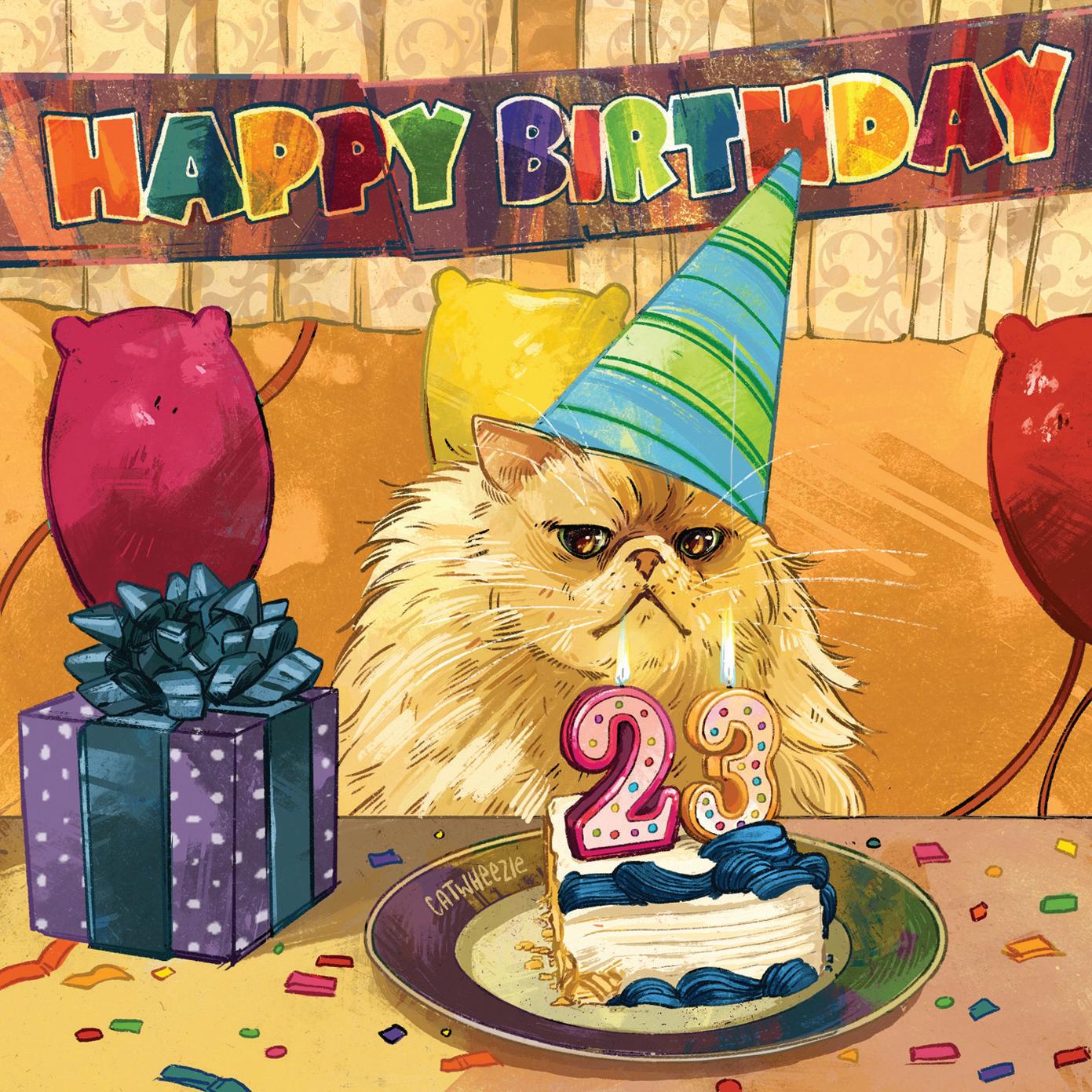
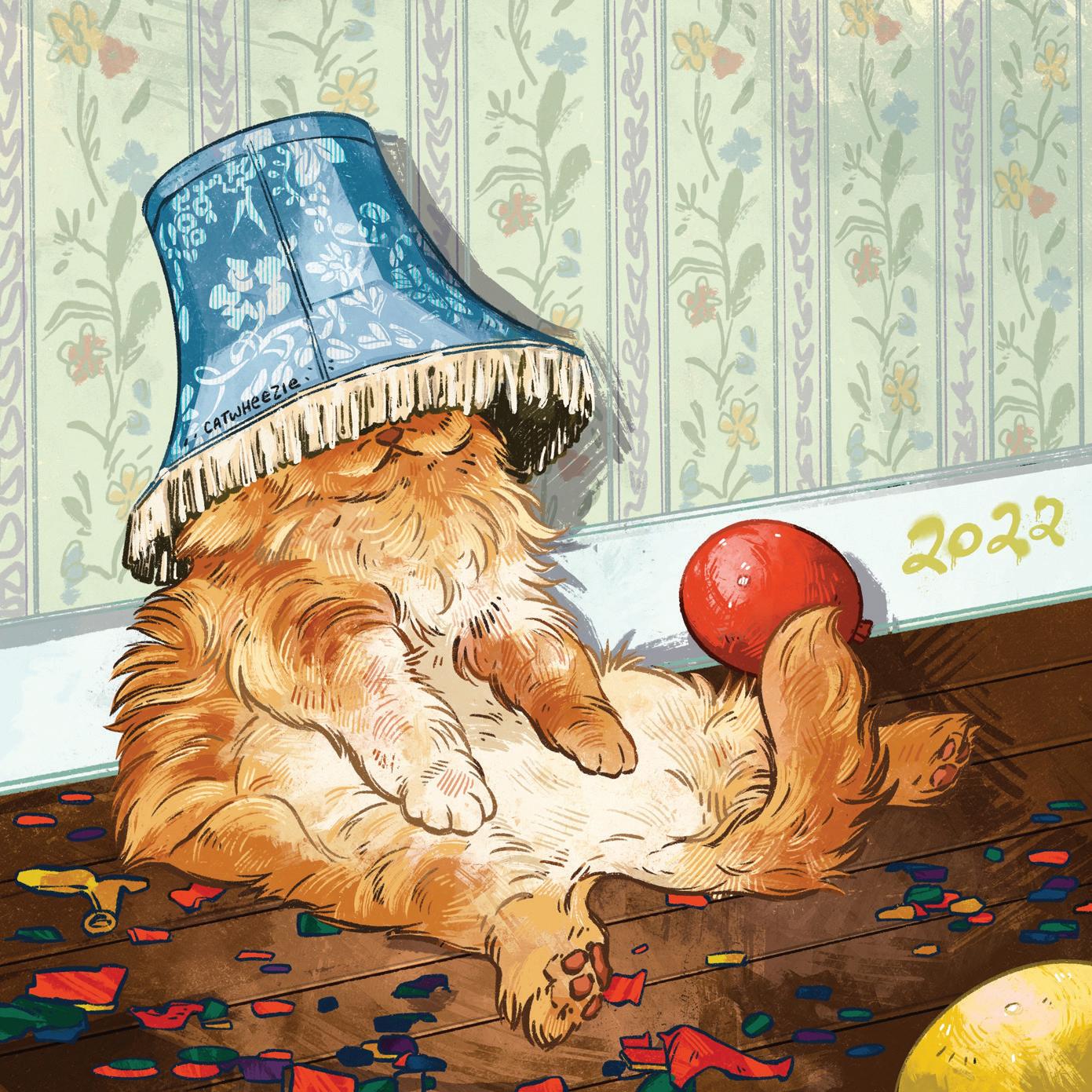
44 PURR — ISSUE NO.1

45PURR — ISSUE NO.1

HE ALWAYS COMES WHEN I CALL HIM. HE NEVER SWIPES AT THE DOG. HIS TONGUE FEELS LIKE 80-GRIT SANDPAPER. HE’S DAMN NEAR PERFECT.



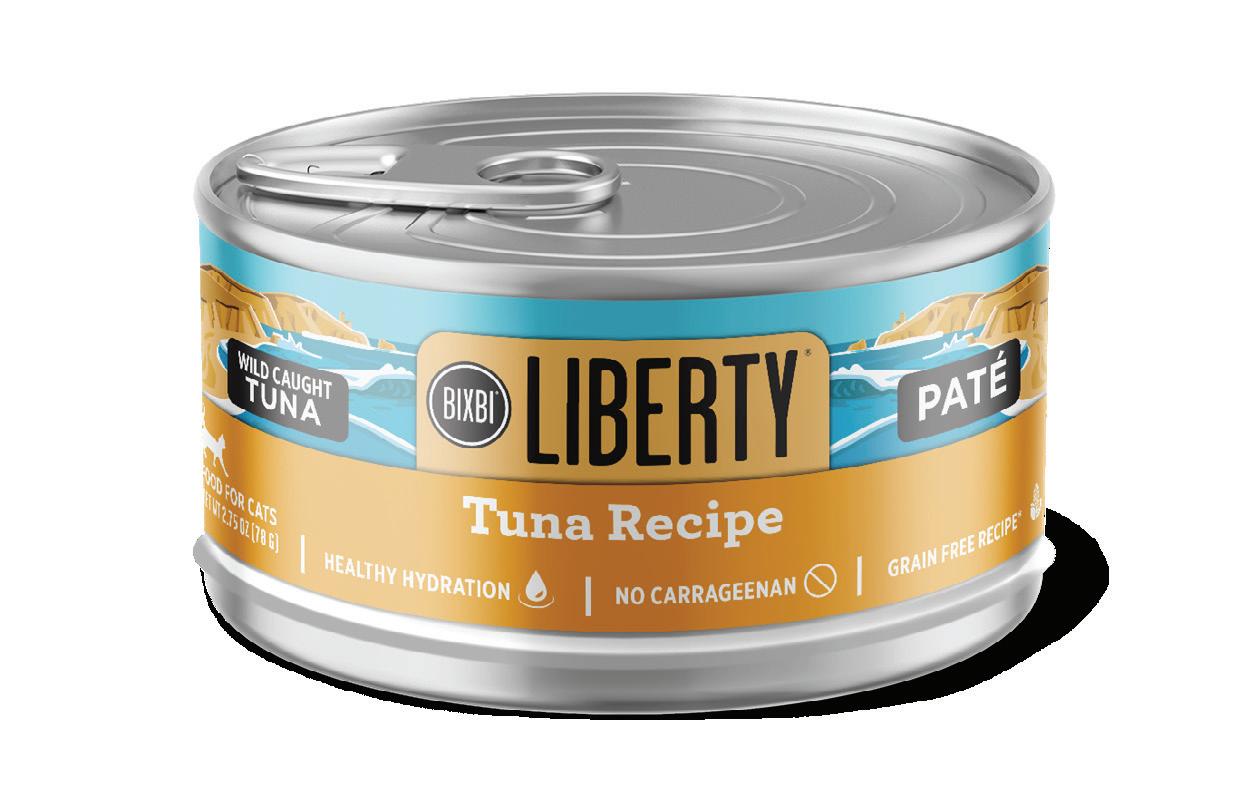


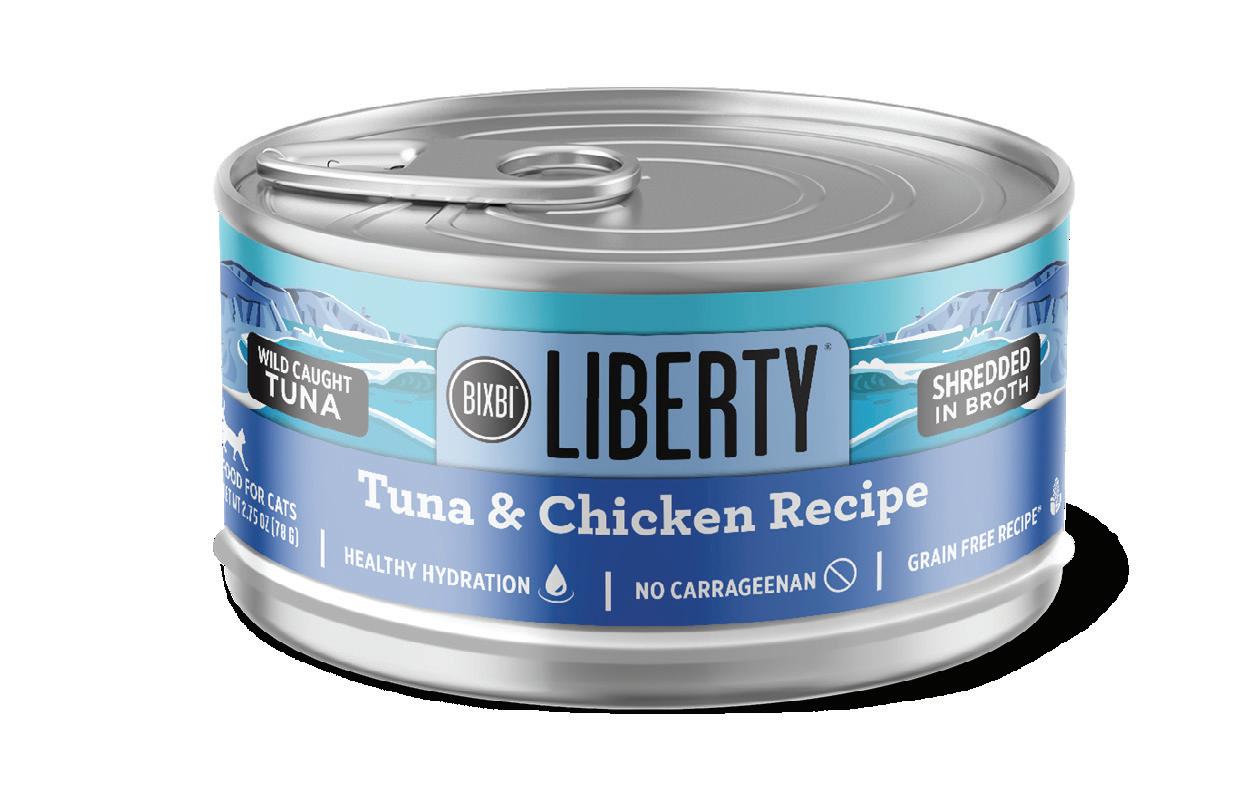



SAVORY PATÉ OR MEATY SHREDS. SUSTAINABLY SOURCED PROTEINS. COMPLETE & BALANCED.
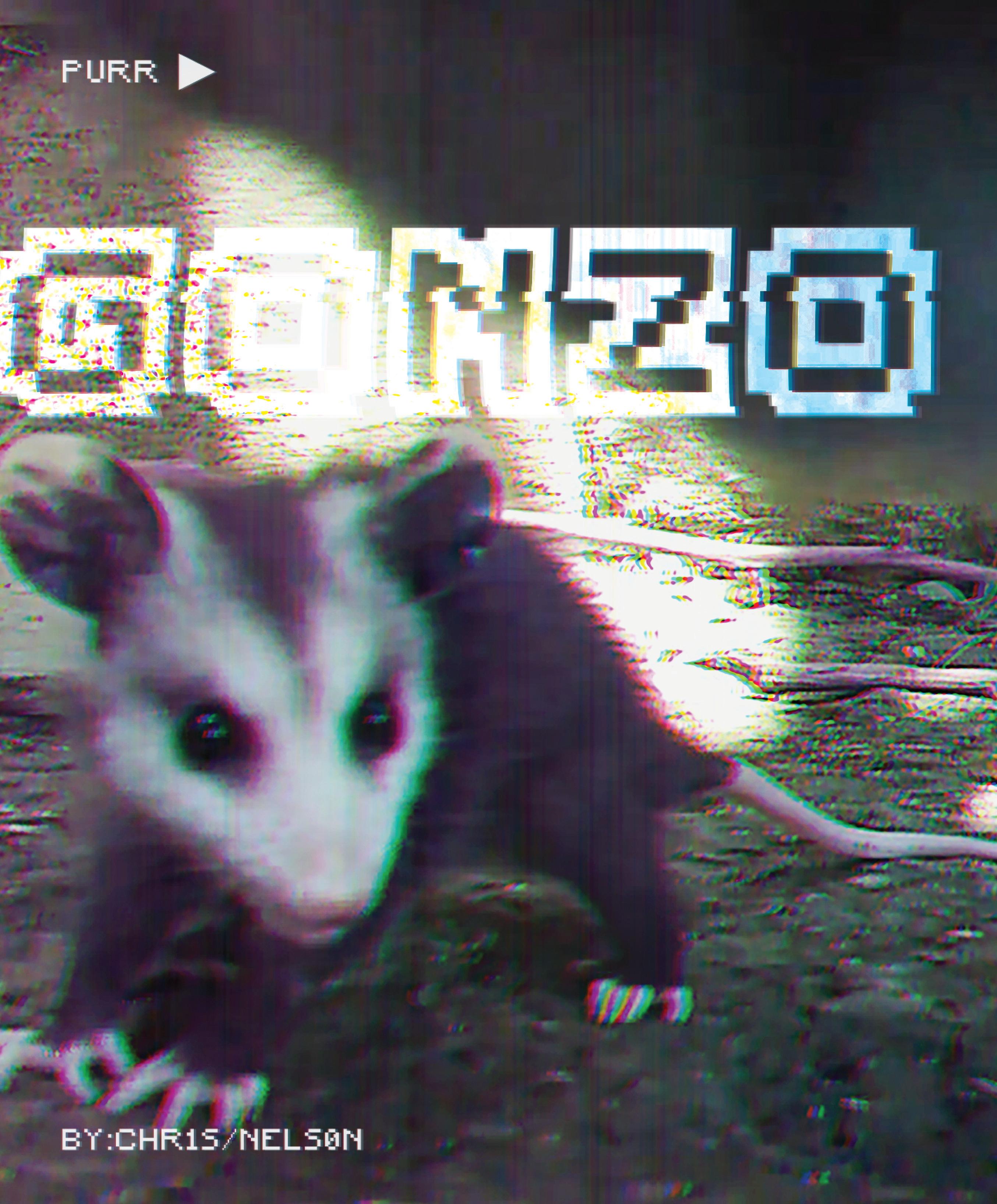
48 PURR — ISSUE NO.1

SEE LIFE THROUGH THE COLLAR CAM OF AN OUTDOOR CAT. 49PURR — ISSUE NO.1
Outdoor cats are some of the most fascinatingly furtive creatures. They leave for hours — sometimes days — and then return home, curl up on the couch for nap, and act like they didn’t have adventures or experience worlds that we humans can only imagine. They sleep soundly as questions clog our minds: Where did they go? What did they do? What did they see?
While this curiosity cannot be answered by cats, we now have the technology to peek into the lives of these rogue rovers; strap a camera to a cat’s collar, and their once-cloaked quests come to life in Technicolor and play out on our screens. This method, though, should not be pursued by every owner of an outdoor cat, according to the pioneering dad
of the best-known collar-camera cat, Gonzo. “Documenting stuff from a cat’s perspective and getting to understand what’s going on with an outdoor cat is cool and interesting,” says Derek, Gonzo’s dad; he asked that his last name not be included in this article. “I think the downside is that if people are motivated to do it for internet content, eventually, somebody’s going to throw an indoor cat outside in hopes that they get some good videos, and it’s going to end badly.”
Derek is a documentary filmmaker based in Burbank, California, and in 2015 he and his wife adopted kitten Gonzo from the Pasadena Humane Society. For the first six months of the cat’s life, they kept the shorthair indoors,
then slowly started letting him out into the nicely manicured patio of their apartment complex under strict supervision. “He handled himself pretty well out there, so we gradually started letting him out more and more, and when he was a year old, he started asking to go out,” Derek tells us. “So, we’d let him out, and if we called him from the porch, he’d come running back in. He seemed well-suited to the outdoors, so we installed a little cat door in our kitchen window so he could come and go as he pleased.”
After a few years of outdoor living, Gonzo brought home a small, still-alive bird, dropped it on the kitchen floor, and totally freaked out his family. The incident made Derek wonder: What is he doing when we’re
When Gonzo’s owner, Derek, reviewed the first day of footage, he didn’t see much, as Gonzo just napped in a bush. On the second day, however, the camera was greeted with two friendly opossum friends.

50 PURR — ISSUE NO.1

51PURR — ISSUE NO.1
not watching him? Is he getting into trouble? Is he going to run under a car? Curiosity collided with responsibility, and Derek decided that he needed to educate himself about what Gonzo got up to during his days out. In early 2019, Derek bought a small, cheap spy camera and attached it to Gonzo’s break-away collar; what else would you expect of a documentary filmmaker?
Derek says, “On the first day, Gonzo just slept in some bushes, but on the second day, I was scrubbing through the footage, and suddenly there’s an opossum face right in the lens. I thought I was about to watch a murder
go down, but no. Another little possum buddy came down, and Gonzo sniffed them, and they all just chilled. And that was when we were like, ’Whoa, this has to go on the internet.’"
Once or twice a day, as Gonzo came and went as he pleased, Derek installed a freshly charged mini camera on the cat’s collar, which yielded about 90 minutes of relatively low-resolution footage; Derek has since upgraded to a trio of higher resolution Insta360 cameras, but the tradeoff is that each camera captures only about 30 minutes of footage. “I’ll film him 90 minutes a day,” Derek says, “and it’ll take me, like, five minutes

to review it, and most of it ends up getting deleted because he is usually just napping somewhere.”
Gonzo never again brought home a half-dead animal after the bird in the kitchen, which seemed to deeply startle the cat, and instead he started bringing his parents “trash gifts.” Gonzo comes home with a discarded coffee cup lid or a decrepit centerfold from a vintage Playboy magazine and expects treats, pets, and affection. “The trash gifts are obviously one of the motifs that is most interesting and constant throughout these three years,” Derek says. “I’m pretty sure he wants to provide, and I think this
52 PURR — ISSUE NO.1
 Gonzo makes many curious friends on his outings, and a few enemies too.
Gonzo makes many curious friends on his outings, and a few enemies too.
53PURR — ISSUE NO.1




54 PURR — ISSUE NO.1
documentary project offers some evidence of that.”
For the first two years of the project, Derek posted only on Instagram, but then he started posting on TikTok, and within a week he had gotten more views, follows, and likes than he had gotten over two years on Instagram. Now Gonzo (@ gonzoisacat) has more than 600,000 followers across both social media platforms, with tens of millions of views and likes.
Fame, though, is not always as sweet as it sounds, and Derek started receiving criticisms from people who believe that cats shouldn’t be let outside. “There are nutjobs who will make threatening comments about Gonzo or talk about how, in their neighborhoods, kids torture cats and stuff like that. But overall, I think the positives outweigh the negatives,” Derek tells us. “There are a lot of super fans that really love this, and we get a lot of
comments from folks that tell us, ’I’ve been depressed lately, and this cat is the only thing keeping me from going off the deep end.’"
Soon, Derek will start work on a feature documentary that celebrates this project in its entirety. He’s currently planning an outline for the narrative, and he hopes that renowned film director Werner Herzog might be open to narrating Gonzo’s parts. As Derek turns his focus toward the documentary, he will likely
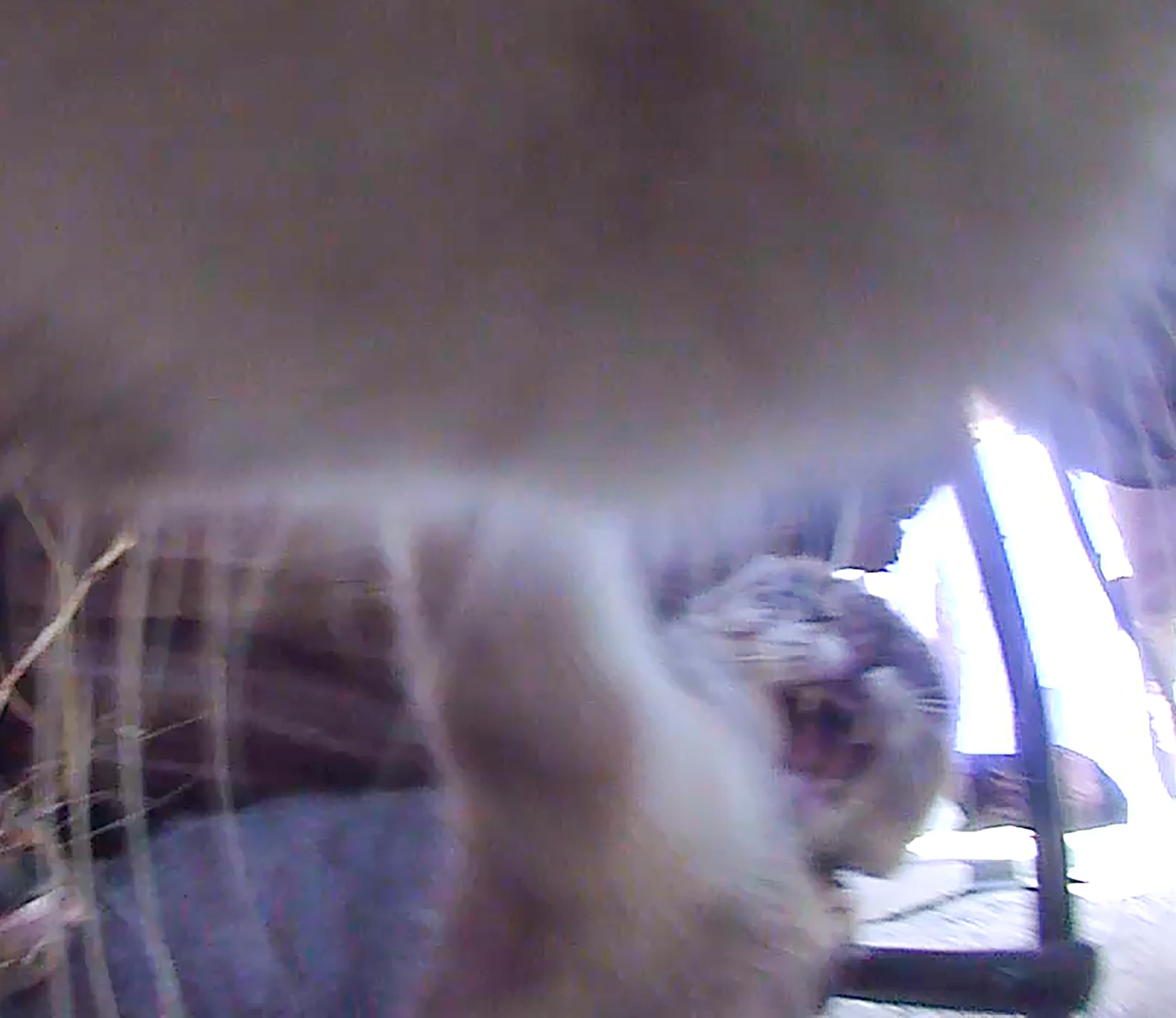 Outdoor cats have lives their owners know nothing about. Gonzo’s camera gives us insight into the encounters — both friendly and confrontational.
Outdoor cats have lives their owners know nothing about. Gonzo’s camera gives us insight into the encounters — both friendly and confrontational.
55PURR — ISSUE NO.1
post less and less on social media, because he isn’t interested in running the accounts through the end of Gonzo’s life. “It’s always sad when you see other pet accounts where the owners are like, ’Our guy crossed the rainbow bridge today,’ or something like that, and I’m hoping to never make that post,” Derek says. “I’m hoping to ride off into the sunset with a still-alive cat because we have so many parasocial relationships — the bonds you form with somebody that doesn’t know you, but you see on social media — and I don’t want to crush a bunch of people in six years’ time or whenever Gonzo dies.” Since the beginning, having

the right priorities has been core to this project, which came from a place of both curiosity and responsibility, and has continued as a way to gather as much knowledge about the enigmatic life of one charming outdoor cat. “This isn’t for everybody, and if you’re going to do it, make sure you’re doing it for the right reasons,” Derek says. “We would’ve been willing, at the beginning of this project, to stop letting Gonzo outside if we had found that he was putting himself in danger or killing a bunch of things, but because we’re educated about what he’s doing out there, we feel confident and comfortable letting this
continue.”
Gonzo has pulled back the curtains of the odd world of an outdoor cat and let us live in it vicariously through the camera hanging from his collar. “People make so many generalizations about cats in our comments, like, ’You should never do this,’ or, ’This should never happen,’ but then the footage contradicts all this dogma that people have about outdoor cats. It’s arguable that we know our cat better than most anybody knows their cat, because we see his private life even when we’re not looking. It has connected us in a unique way, and it’s interesting to now see my cat as an individual — like a person. “ “

PURR — ISSUE NO.1
While it certainly brings a smile to many, it was never Derek’s intention to run a social media account for his cat, nor does he intend to keep it updated throughout Gonzo’s life. What’s next?
Look out for a documentary about Gonzo’s adventures.

57PURR — ISSUE NO.1
FEATURED ARTIST: RAVI ZUPA
Title , 20XXTitle , 20XX @raviamarzupa
MANY OF THE PEOPLE THAT I FIND THE MOST INTERESTING ARE A LOT LIKE CATS. “ 58 PURR — ISSUE NO.1

59PURR — ISSUE NO.1
Ravi Zupa
When Ravi Zupa was six years old, he bought a tall stack of old cat calendars at a thrift store for one penny. He plastered two of his walls from floor to ceiling with these photos of cats for many years. Zupa has always loved art — looking at it, being influenced by it, making it, and influencing others with his own creations. He is wellversed in art history, mythology, religion, and the history of a variety of cultures, all of which influence his work as much as the common, mass-produced labels on ordinary products. Zupa has always loved cats and is particularly fond of Brenda, a stray he found in his neighborhood and helped nurse back to health. Over a two-year period of time, Zupa fed Brenda in his backyard and has been slowly rewarded with her trust and affection.

60 PURR — ISSUE NO.1
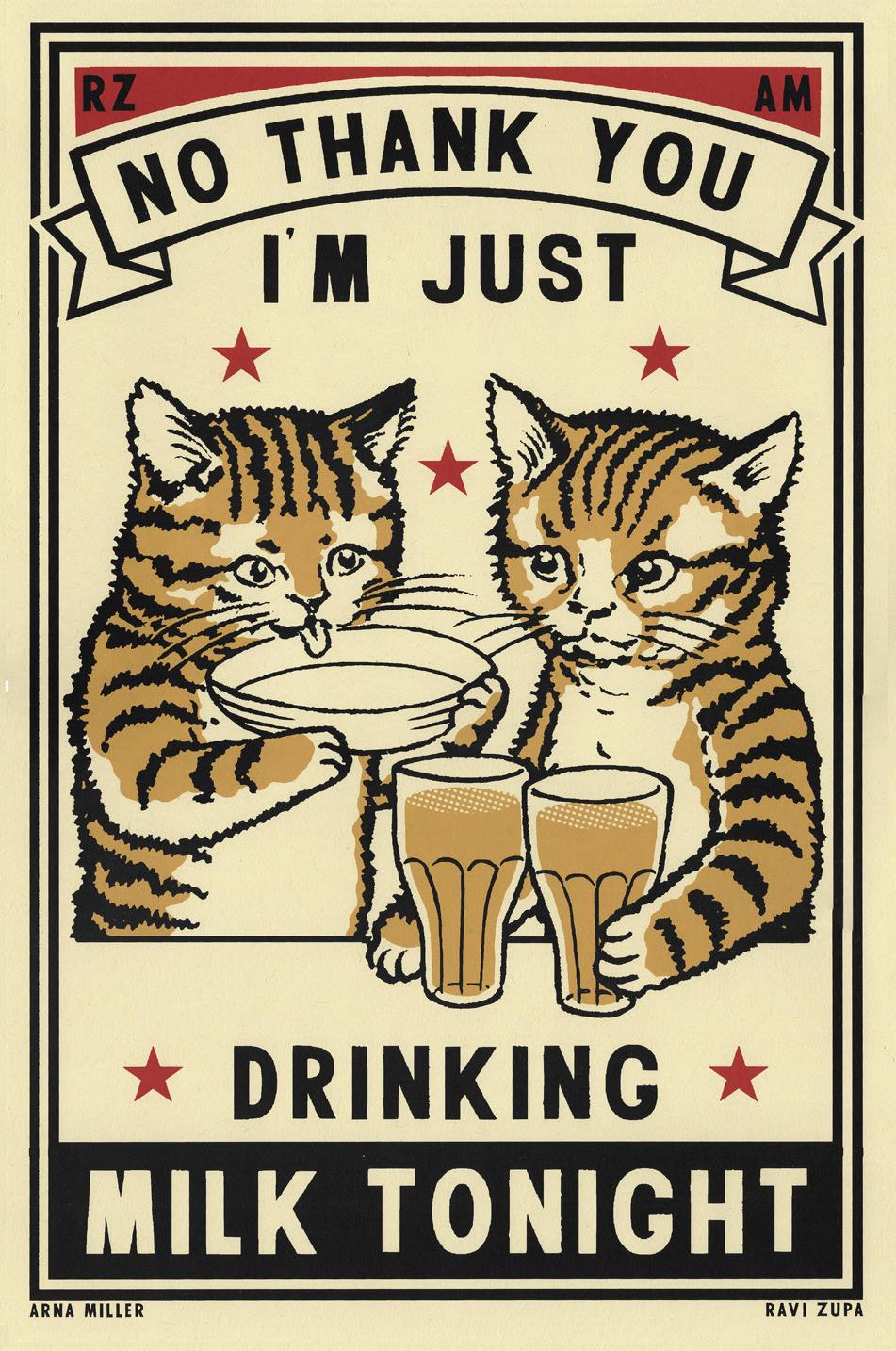

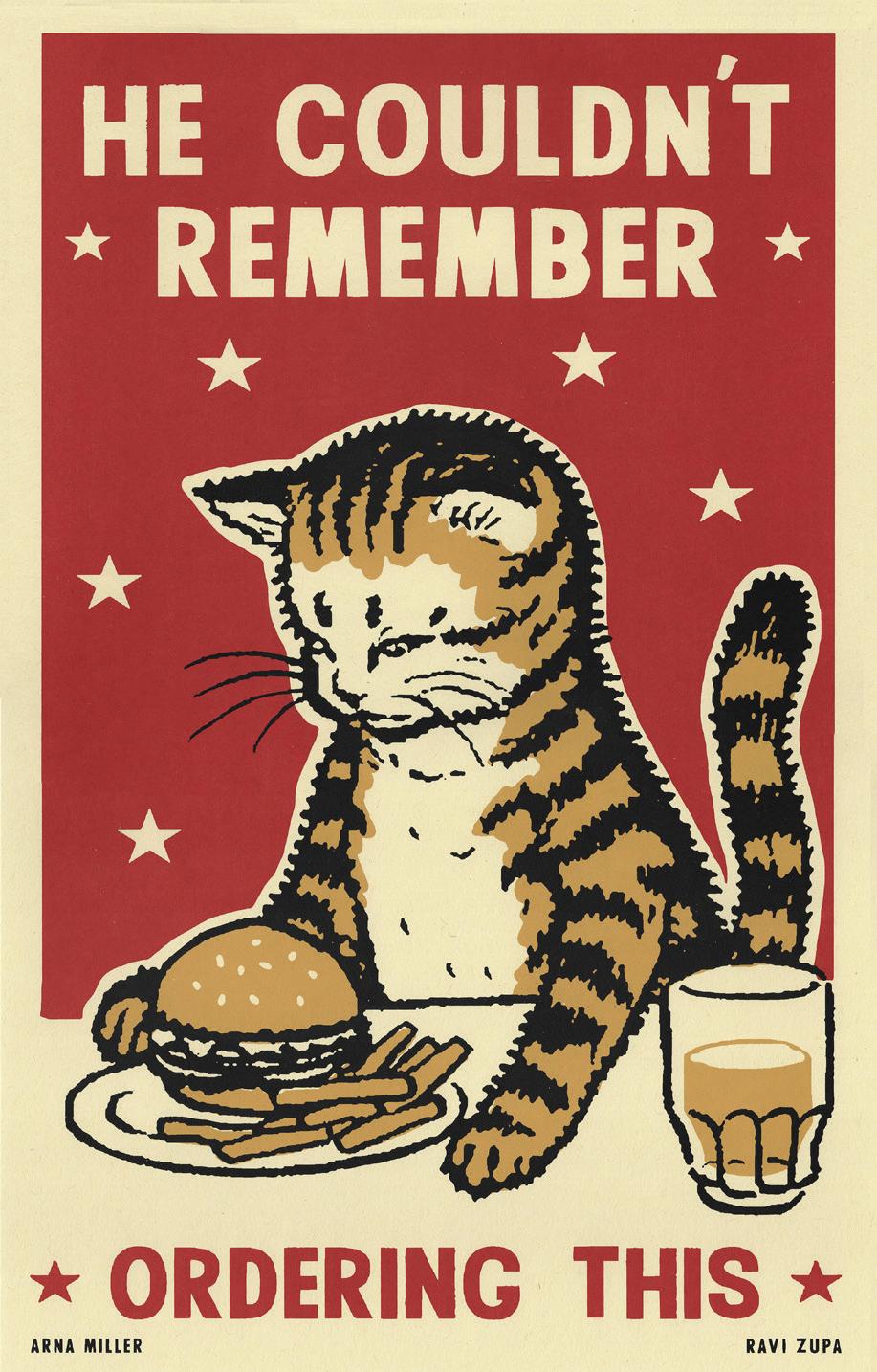
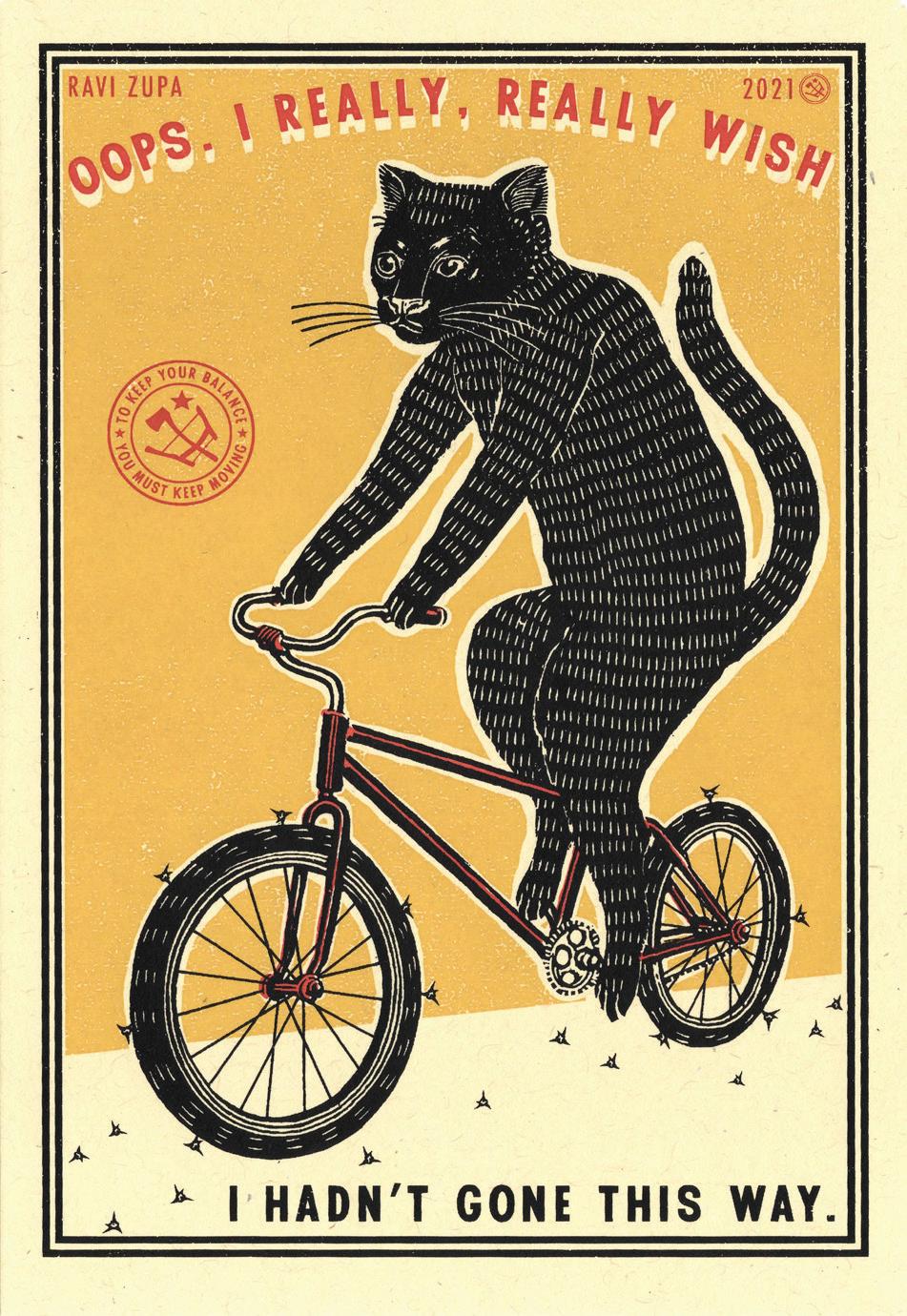
61PURR — ISSUE NO.1

MORE TO LOVE PURR — ISSUE NO.1
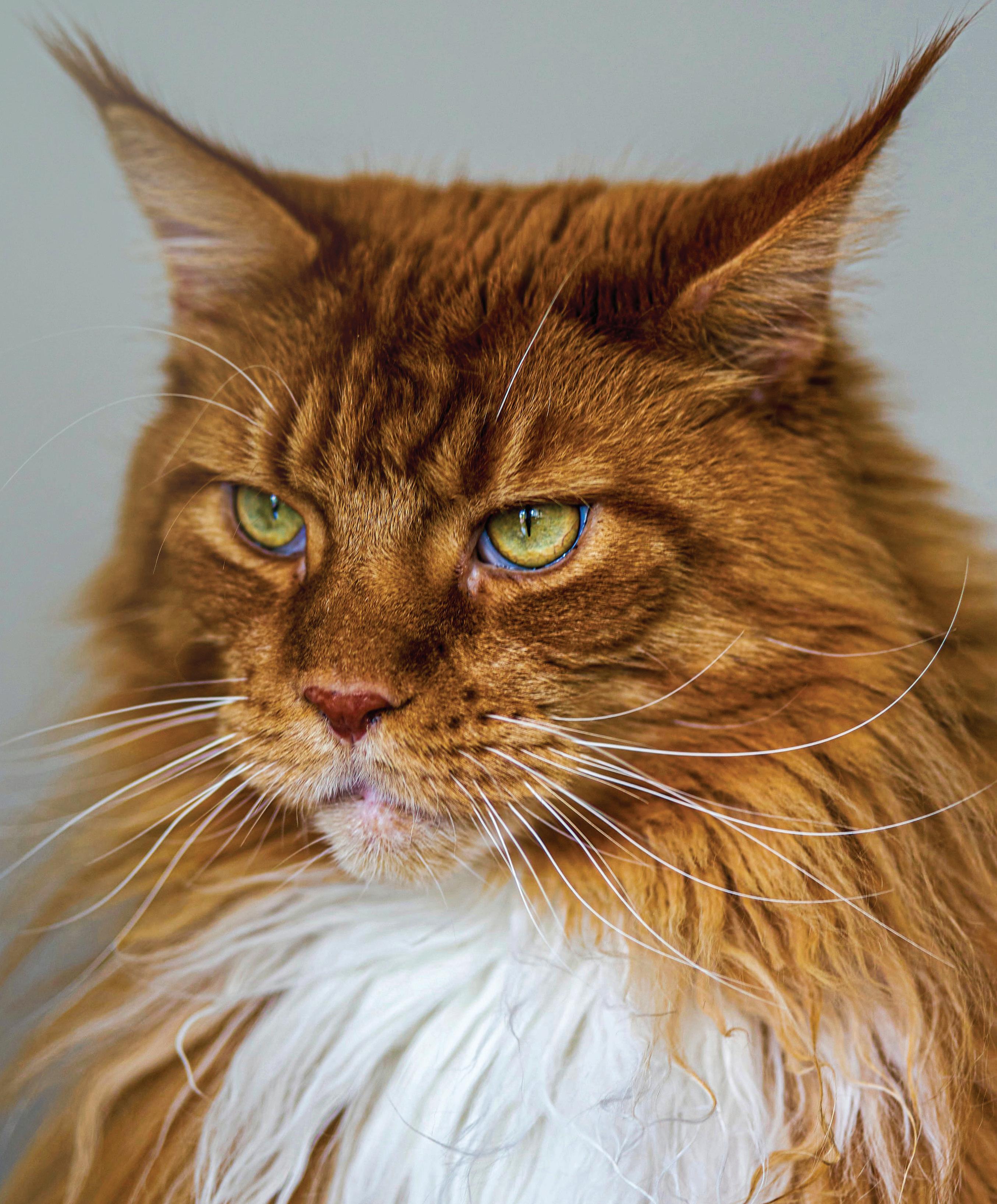 WORDS BY ALYNN EVANS PHOTOGRAPHS BY VARIOUS
WORDS BY ALYNN EVANS PHOTOGRAPHS BY VARIOUS
63PURR — ISSUE NO.1
If you blindly came across a Maine Coon, chances are you’d need to do a double-take to make sure you weren’t about run right into some sort of bobcat. The Maine Coon is the largest breed of domesticated cat — or at least they appear the largest under several inches of thick fluff. Their facial features are round but pronounced. Wide cheek bones and a puffy muzzle sit perfectly below two big, oval eyes. Their ears, tall and impressive, are adorned with long tufts of fur, giving them a distinguished appearance; it’s almost as if a feline wizard has ambled out of a fairytale.
Perhaps they are from a fairytale, as there are certainly many fictitious theories about how the Maine Coon came about. One suggests the Maine Coon
Igot its impressive, bushy tail by mating with raccoons. In a more plausible scenario, many believe Vikings bred longhaired cats that made their way stateside about a thousand years before European colonizers arrived.
One of the more colorful rumors involves the downfall of a European empire. In the late 18th century, the French Revolution began and Marie Antoinette, the last queen of France and wife of Louis XVI, knew she was in trouble. Somehow, she was introduced to Captain Samuel Clough, a merchant seaman from Maine, who was trading goods with France and became involved in a plot to help her escape to America. As the story goes, Antoinette gathered her belongs and pets to escape to America before being put on trial,

64 PURR — ISSUE NO.1

65PURR — ISSUE NO.1

MANY BELIEVE VIKINGS BRED LONGHAIRED CATS THAT MADE THEIR WAY STATESIDE ABOUT A THOUSAND YEARS BEFORE EUROPEAN COLONIZERS ARRIVED. 66 PURR — ISSUE NO.1
but was convicted and executed in 1793 before she could begin her exile. However, several of her prized Turkish Angora cats made it on the ship and eventually arrived at the shores of Wiscasset, Maine, and bred with the local domesticated cats. While it’s unlikely the Maine Coon’s origin involved French royalty, its ancestors did probably hitch a ride with European colonizers.
Once established, it didn’t take long for the breed to become wildly popular; their size alone was an awe-inducing feature among New Englanders. Owners started entering the cats in local fairs, and when the first North American cat show was put on in 1895, a Maine Coon by the name of Cosey took the blue ribbon.

As one of the oldest cats in North American history, the Maine Coon is also one of the most well-known cat breeds today, though far from typical. Unlike other cats, Maine Coons are known for their affinity for water, perhaps because of their longer, somewhat water-resistant fur. They are also more likely than the average cat to be polydactyl, sporting an extra toe or two.
We know their size and appearance are impressive, but it’s the Maine Coons’ personality that owners boast as one of their greatest qualities. They are gentle and balanced. While highly social, they are not overly needy and yet not too independent. The Maine Coons’ size alone will make their presence hard to ignore — but with so much love to give, you would never want to, anyway.

67PURR — ISSUE NO.1
@theprintedcatFEATURED ARTIST: JOHANNA BREUCH WITH CATS, YOU KNOW WHAT’S UP; EITHER THEY HATE YOUR GUTS OR CAN’T HANDLE YOU LEAVING. “ 68 PURR — ISSUE NO.1
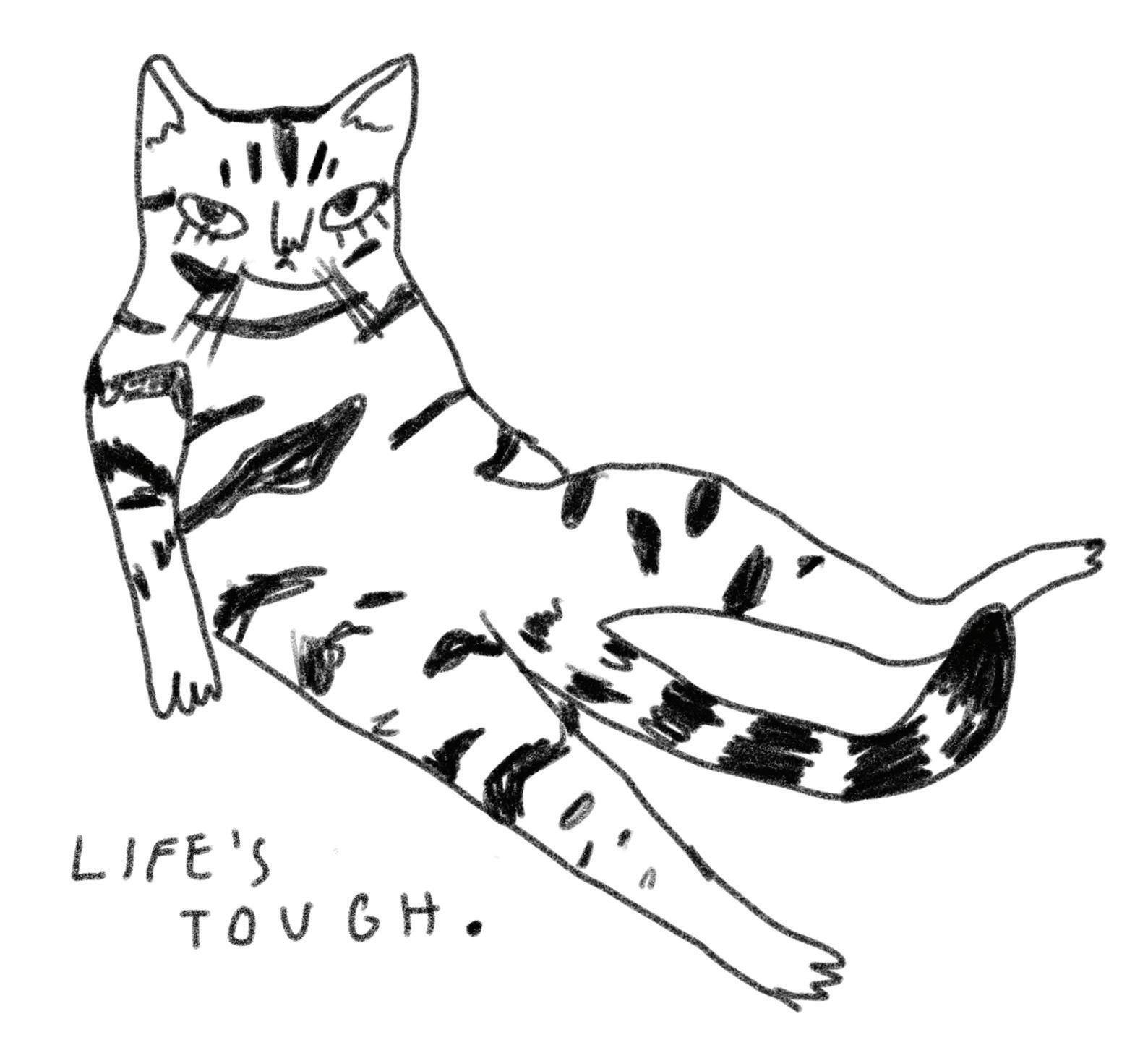

69PURR — ISSUE NO.1
Johanna Breuch
Johanna Breuch studied a wide assortment of methods and mediums, allowing her to express herself through a variety of creative pursuits without having to commit to one way of doing things. Though free to explore, Breuch felt she still needed something to ground and guide her art. In 2019, she decided to make cats her main creative theme, launching her into a successful frenzy of cat-centric illustrations, screen prints and wearable art. Breuch appreciates the complexity that cats bring; it’s not easy to earn a cat’s love, some cats may never warm up to you, and you just have to be okay with that. Breuch’s boyfriend is allergic to cats, so for the first time in her life, she doesn’t have a cat in the home — making her artistic pursuits all the more special.

70 PURR — ISSUE NO.1


71PURR — ISSUE NO.1

72 PURR — ISSUE NO.1
WORDS BY ELANA SCHERR ILLUSTRATION BY KATHERINE STREETER
PAREELONDRES
PHOTOGRAPHY COURTESY OF THE LIBRARY OF CONGRESS
EARLY AVIATORS — NEEDED NINE LIVES — NO WONDER THEY INVITED CATS ALONG FOR LUCK.
073
73PURR — ISSUE NO.1
By all accounts, Paree-Londres loved to fly, which would be unremarkable if Paree was a bird, or a bat, or even a dog, but Paree was a cat, a brave little tabby who helped make aviation history. Paree’s story is tied with that of early aviator John Moisant. Moisant was born in Chicago in 1868, one of nine children in a French-Canadian immigrant family. All the Moisant children were bold and innovative; they built fortunes in Central America, lost them, and rebuilt them. John in particular was a wild man, once leading a rebel army against his brother’s enemies in the El Salvadorian government. It was not a success, but it did make the headlines.
Three years later, Moisant made headlines again, this time for an assault on the law of gravity itself. Obsessed with the burgeoning science of flying, he headed to France — known at the time for its support of early aviators — and set to work designing an airplane. That he had never flown or
Bformally studied engineering was no barrier to his ambitions, and he did assemble a working plane, which he promptly crashed. As repairs commenced, he decided to get a little experience under the famous pilot and plane-designer, Louis Blériot.
A little experience was all it took. Moisant started lessons in July, 1910, and by the end of the month, he became the thirteenth American to claim a pilot’s license. He promptly told Blériot that he planned to be the first person to fly from Paris to London with a passenger. Blériot reportedly told him that there were easier ways to commit suicide, but Moisant, like the cat he’d soon adopt, was fearless.
On August 16th, Moisant and his mechanic, Albert Fileux, took to the air. Flying an hour at a time, with numerous crashes and repairs along the way, it would take the two men until September 6th to reach London. It was an incredible achievement for someone who
had only had a license for two weeks before setting off. During the journey, a local fan in Kent gave Moisant a small, gray-striped kitten. Moisant named her PareeLondres in honor of the journey, and she rode in a bag on Fileux’s lap through all the cold, wet, crashfilled days it took to get to London. The flight made both European and American papers, and all the articles took note of the third passenger.
When asked why he had brought the cat along, Moisant told a Memphis paper, “I just thought I’d do it, so I did,“ which pretty well sums up his entire life philosophy. Paree enjoyed flying, purring happily while in the air. “You ought to have seen this kitten,“ Moisant told local papers. “He [Paree was later discovered to be a female] enjoyed himself immensely and wasn’t a bit afraid. He was still curled up in the bag, his bright eyes peeping up at me when the crash came, and even the noise of breaking wood did not

74 PURR — ISSUE NO.1
Does she think she’s a parrot? Maybe that’s why this little cat loved to fly. John Moisant received Paree-Londres about halfway through his first recordsetting flight. She would fly with him the rest of the journey, and through most of his career.
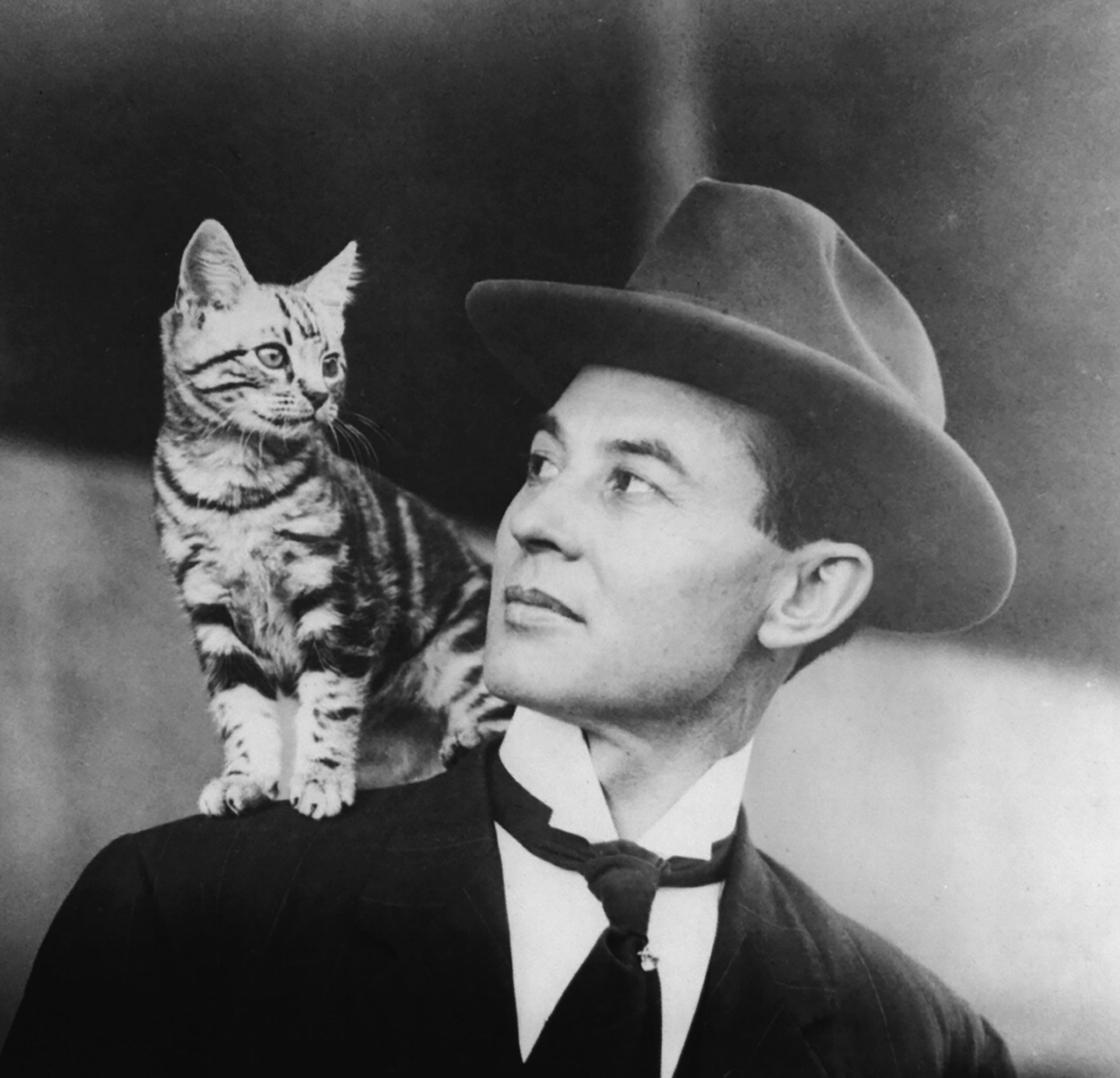
75PURR — ISSUE NO.1
disturb him.“
Back in the states, Moisant and Paree-Londres were celebrities, appearing all over the country for air shows and regularly giving media interviews, where Moisant’s combo of derring-do and soft-hearted love of Paree won him fans in both aviation magazines and on the women’s social pages. His next few months were busy ones. He took second in an endurance air race, and narrowly beat his arch-rival, English aviator Claude GrahameWhite, in a dangerous timed loop over the rooftops of Brooklyn and around the Statue of Liberty. Paree rode along for the victory. So bitter was the two fliers’ rivalry that during their stay in New
York, when Paree briefly went missing, there were rumors that Grahame-White had kidnapped her. A reward was offered for Paree’s return, and when she was eventually discovered in a laundry room, a relieved Moisant gave the laundry girl $25 (nearly $800 in today’s money). The laundry girl wasn’t the only one who made some cash from Paree’s misadventure. Several papers told the story of a newsboy named Stubby, who took advantage of the fame surrounding Moisant to sell stray gray cats to wealthy flight fans, claiming them to be the famed Paree.
While Moisant battled GrahameWhite in the sky, Paree had her own rivals on the ground and in the air.
She earned a newspaper paragraph all to herself after attacking a French bulldog belonging to socialite Mrs. Harry Harkness near the hangars before one of the flight demonstrations. Moisant explained she was grouchy, and missed being up in the plane. Her fellow flying cat, a large striped boy named Kiddo (later changed to Trent, perhaps to grant him some dignity), would have gladly offered Paree his seat. Kiddo went up in a dirigible in October, 1910, and was so displeased by the journey that he became the topic of the first in-flight radio transmission, when his pilot called back to land, “… Come get this goddamn cat!“ Kiddo was safely returned to solid ground.
The adventures of Kiddo and
Moisant gets credit for his derring-do, but perhaps even braver is his riding mechanic, Albert Fileux, who was willing to accompany him on his journey, barely a month after Moisant began flying lessons. In one of their many crashes, Fileux was left clinging to the wing after being flung from the seat.

76 PURR — ISSUE NO.1
THAT HE HAD NEVER FLOWN OR FORMALLY STUDIED ENGINEERING WAS NO BARRIER TO HIS AMBITIONS


77PURR — ISSUE NO.1


OF ALL MOISANT’S MOURNERS, THOUGH , THE MOST INCONSOLABLE WAS PAREELONDRES , WHO HAD NOT BEEN ABOARD FOR THE FATEFUL FLIGHT. 78 PURR — ISSUE NO.1
Cats don’t have the reputation for loyalty that dogs do, but they can love just as faithfully. Paree-Londres was lucky to have skipped Moisant’s fatal crash, but newspapers report she was heartbroken by his death, and attended the funeral in a black-trimmed basket. She would live out the rest of her life with Moisant’s sisters.
Paree were so well-known they inspired satires and fashion trends. The Times Dispatch ran a story from the point of view of a shop cat named Giuseppe, who was obsessed with flying and wouldn’t stop leaping from high corners and knocking over produce. The Brooklyn Daily Eagle declared cats such a trend that cat-related collectibles were displacing other animals on the shelves of department stores.
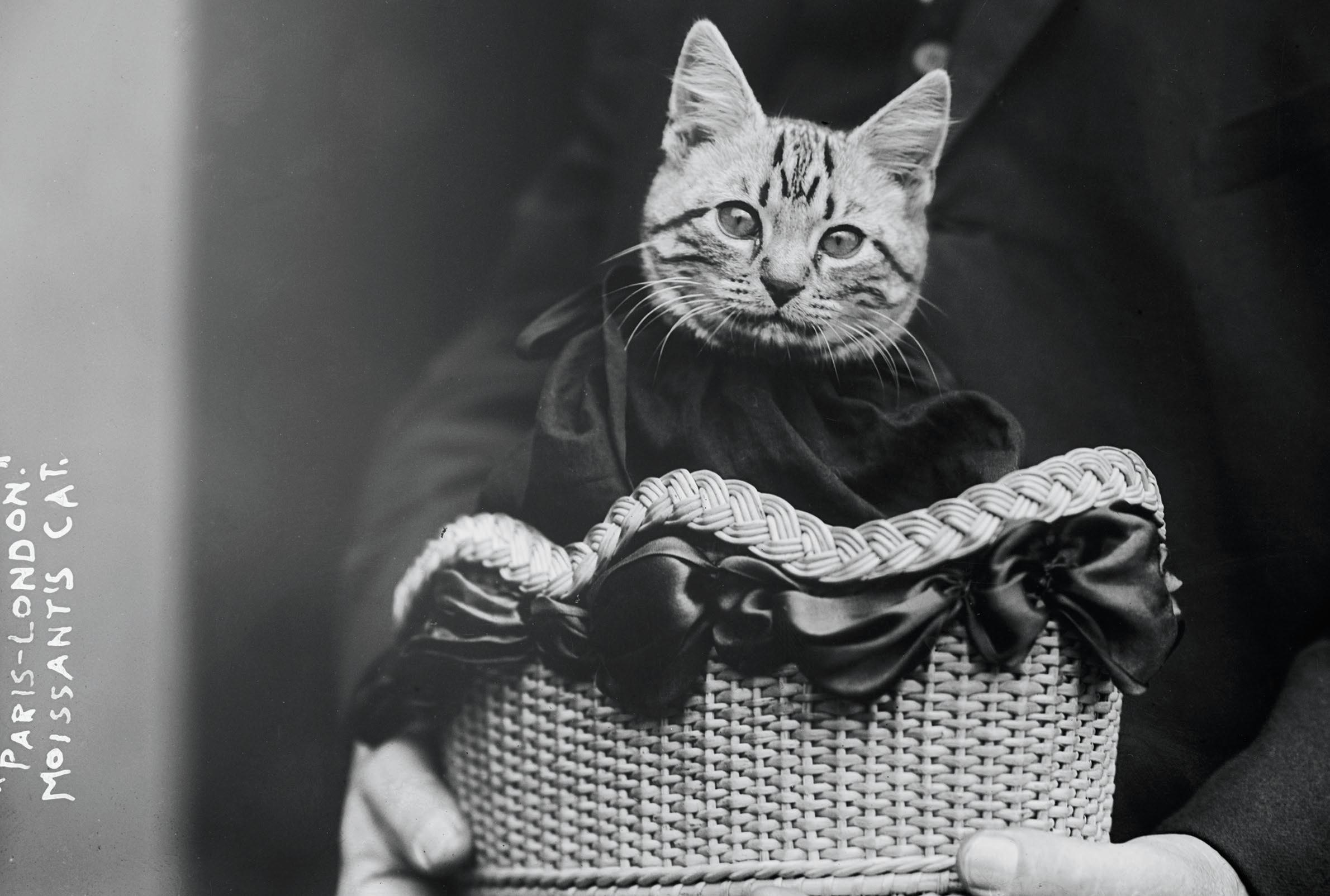
“Teddy bears are forgotten,“ read the article. “Stuffed cats in all shapes and sizes have won the affection of the youngsters.“
Of course, air flight itself was Moisant’s focus more than pet fads. He correctly predicted that mono-wing planes would eventually replace biplanes, that aluminum was a better material
for building planes than wood, and that military use of planes would change warfare forever. He didn’t live to see any of it come true, though. On December 31, 1910, flying above an airfield in New Orleans, Louisiana, Moisant nosedived. He was killed upon impact, just five months after starting his career as an airborne daredevil. While his family and fans were heartbroken, none were surprised. “He was daring, too imprudent,“ said his former copilot, Fileux. “He was awfully reckless … He was flirting with death,“ said Wright Brothers pilot, Arch Hoxsey, who would himself be killed in a plane crash the following month. It was a common story for the pioneers of the sky, the ever-present danger thought to be worth the risk for the moments of airborne ecstasy.
Of all Moisant’s mourners, though, the most inconsolable was Paree-Londres, who had not been aboard for the fateful flight. “What became of Moisant’s cat?“ The women’s page of the Evening Sun of Baltimore asked, along with a story of how the cat searched high and low for John, and could not be comforted when he did not return. The question was answered in another article. “Moisant’s Kitten Will Be Well Cared For,“ read the headline, which went on to reassure readers that Moisant’s sister Matilde had adopted Paree. What the story didn’t say, but which we choose to believe, is that Paree continued to fly, with Matilde. John’s sister was the second woman in the U.S. to get a license, and like her brother, was deeply in love with flight, and with cats.
79PURR — ISSUE NO.1

SHE NAPS IN THE SUN. SHE NEVER POUTS. SHE INTERRUPTS MY ZOOM CALLS. SHE’S DAMN NEAR PERFECT.

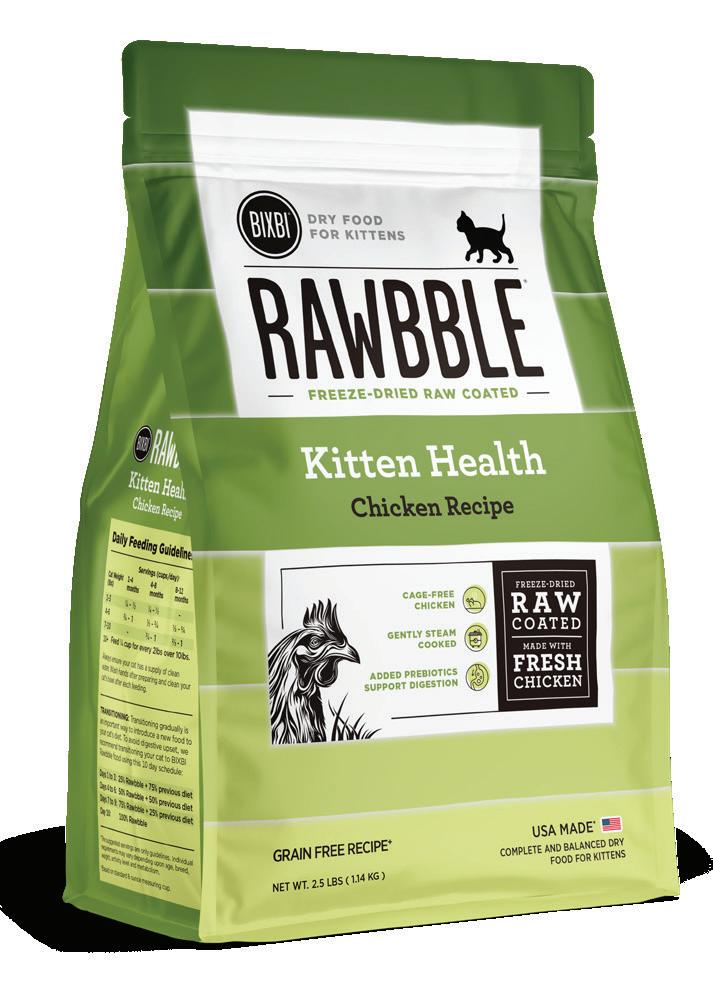

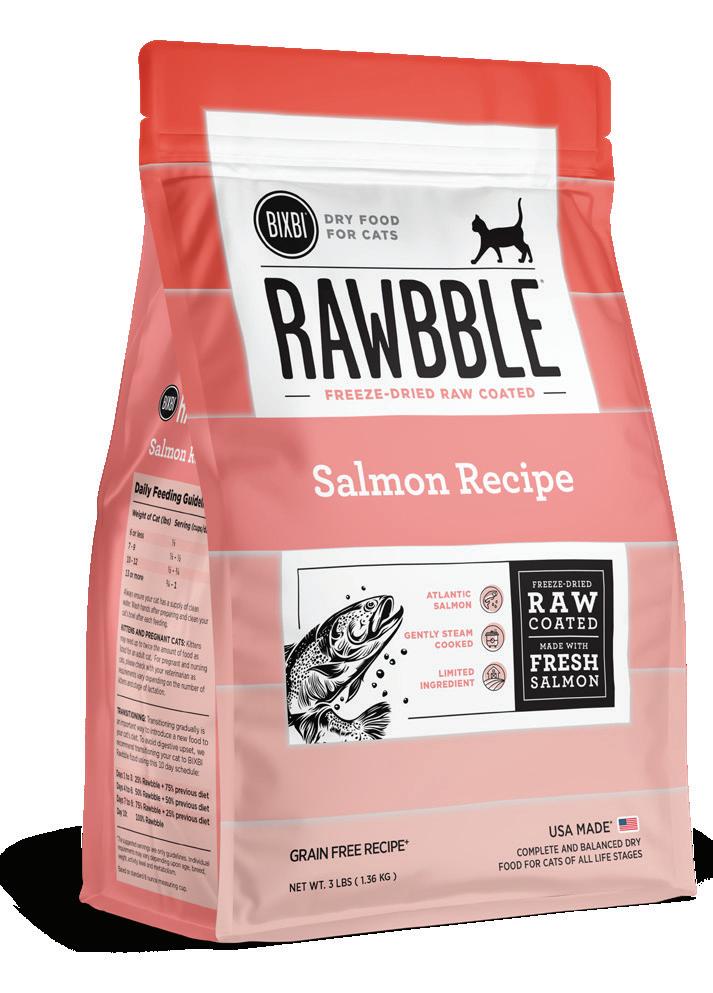
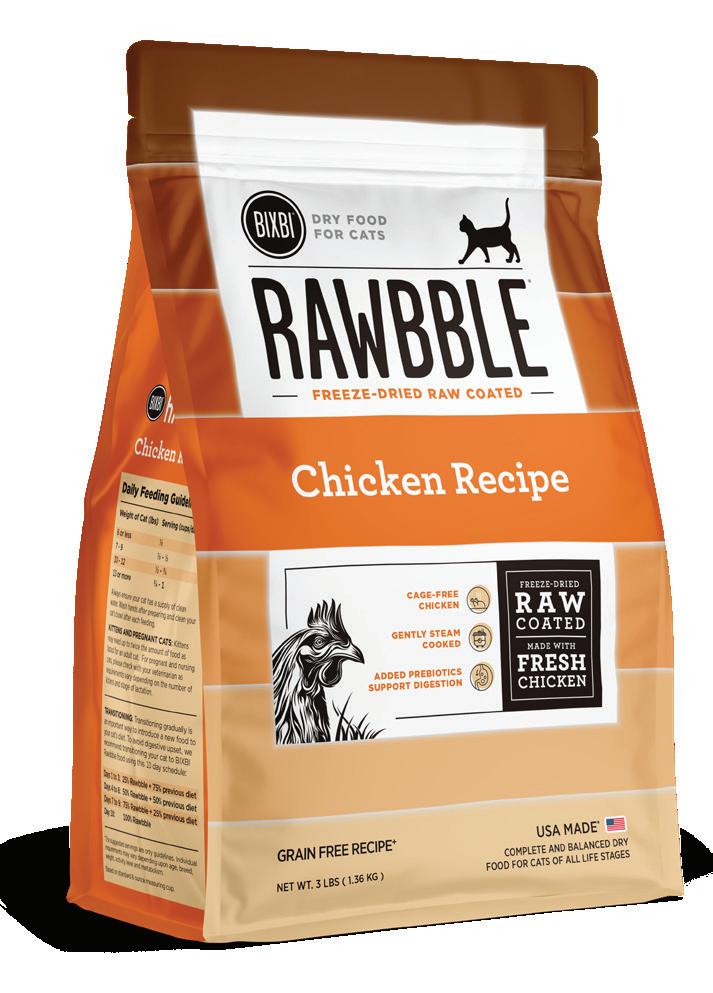


FRESH MEAT, NEVER MEALS. FREEZE-DRIED RAW COATED RECIPES. GENTLY STEAM COOKED.
PHOTO BY ALI KAZAL
THE DUALITY OF BLACK CATS 0 8 2 82 WORDS BY PURR — ISSUE NO.1

 SUNSHINE LEMONTREE
SUNSHINE LEMONTREE
83
PURR — ISSUE NO.1
Any domestic cat with a majority of black fur — whether a specific breed or mixed — may be considered a black cat. Officially, the Cat Fanciers’ Association recognizes 22 breeds featuring solid black coats. Of these, only the Bombay is exclusively black. More commonly male, these shadowy felines often possess golden-colored eyes due to their high melanin content.
No wonder they’re typically depicted with glowing yellow eyes. Throw in an arched back, hackles
raised, and you’ve got the iconic Halloween cat that pervades Western culture. Here, they’re thought to be the familiars of witches and favorites of Satan. But in other places and other stories, they garner a range of notoriety — not all nefarious.
WITCHES, FAIRIES & SCOTTISH WILDCATS
Celtic legend tells of the Cat Sìth, a shapeshifting witch with the power to transform into a black
cat, but only eight times. On the ninth change, the witch becomes trapped forever as a cat. This story likely inspired the myth that cats have nine lives.
In other tellings, the Cat Sìth isn’t a witch, but a fairy who takes the form of a large black cat with a white patch on its chest.
A mischievous figure known for stealing the souls of the dead as they awaited burial, the Cat Sìth greatly influenced the rituals around Celtic funerals. To prevent a soul from being stolen, funeral-
Across cultures, the black cat weaves a curious path through folklore, mythology, and history. Anarchic and esoteric in nature, they serve as symbols of death and misfortune or wealth and happiness — as well as figures of psychic power and feminine mystique.
PHOTO BY
AALINA BELOGOLOVA 84 PURR — ISSUE NO.1
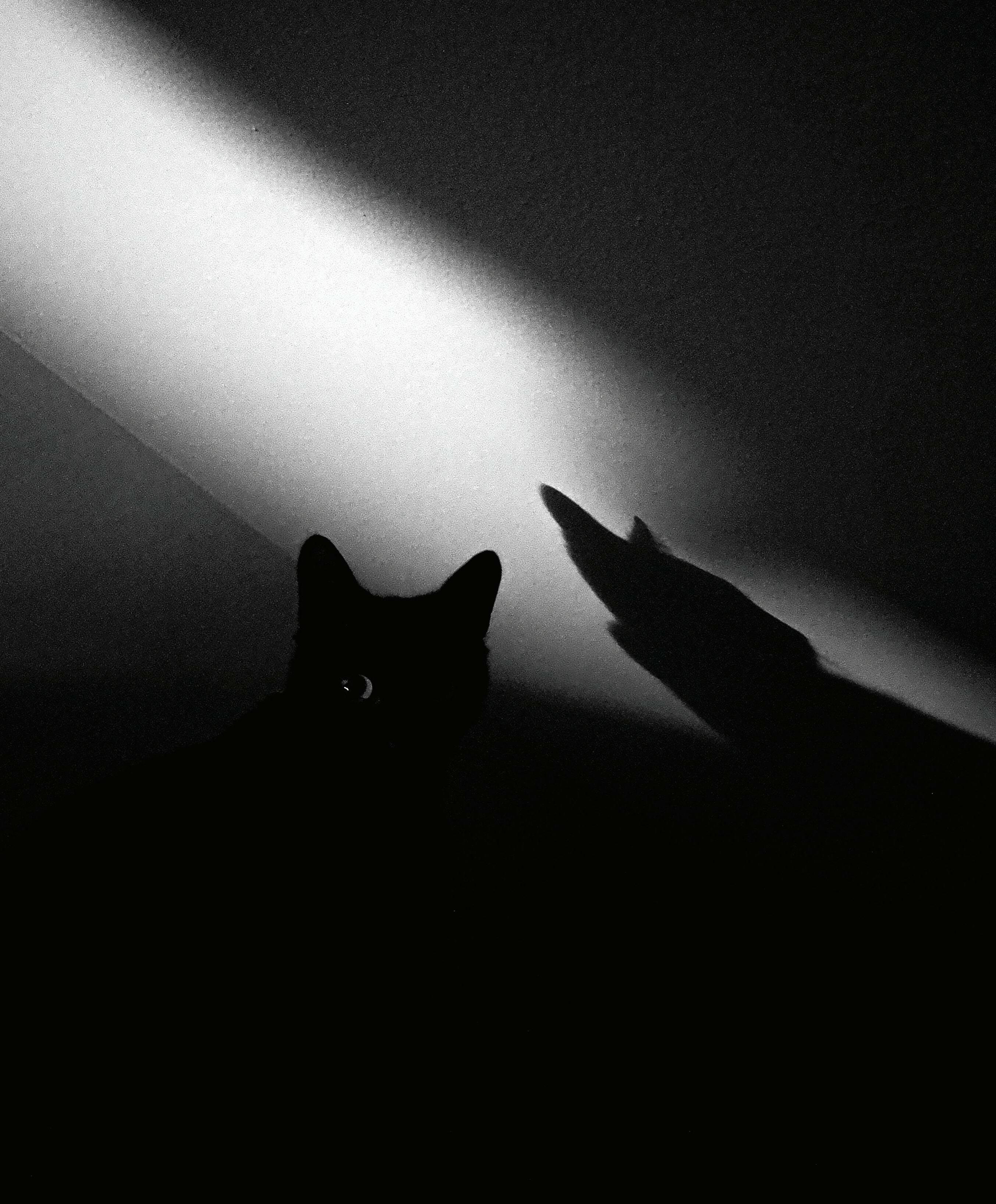

85PURR — ISSUE NO.1
THE BELIEF THAT BLACK CATS SIGNIFY MISFORTUNE IS FAR FROM UNIVERSAL.
Long considered familiars of witches and favorites of Satan, black cats remain a potent symbol of the occult.
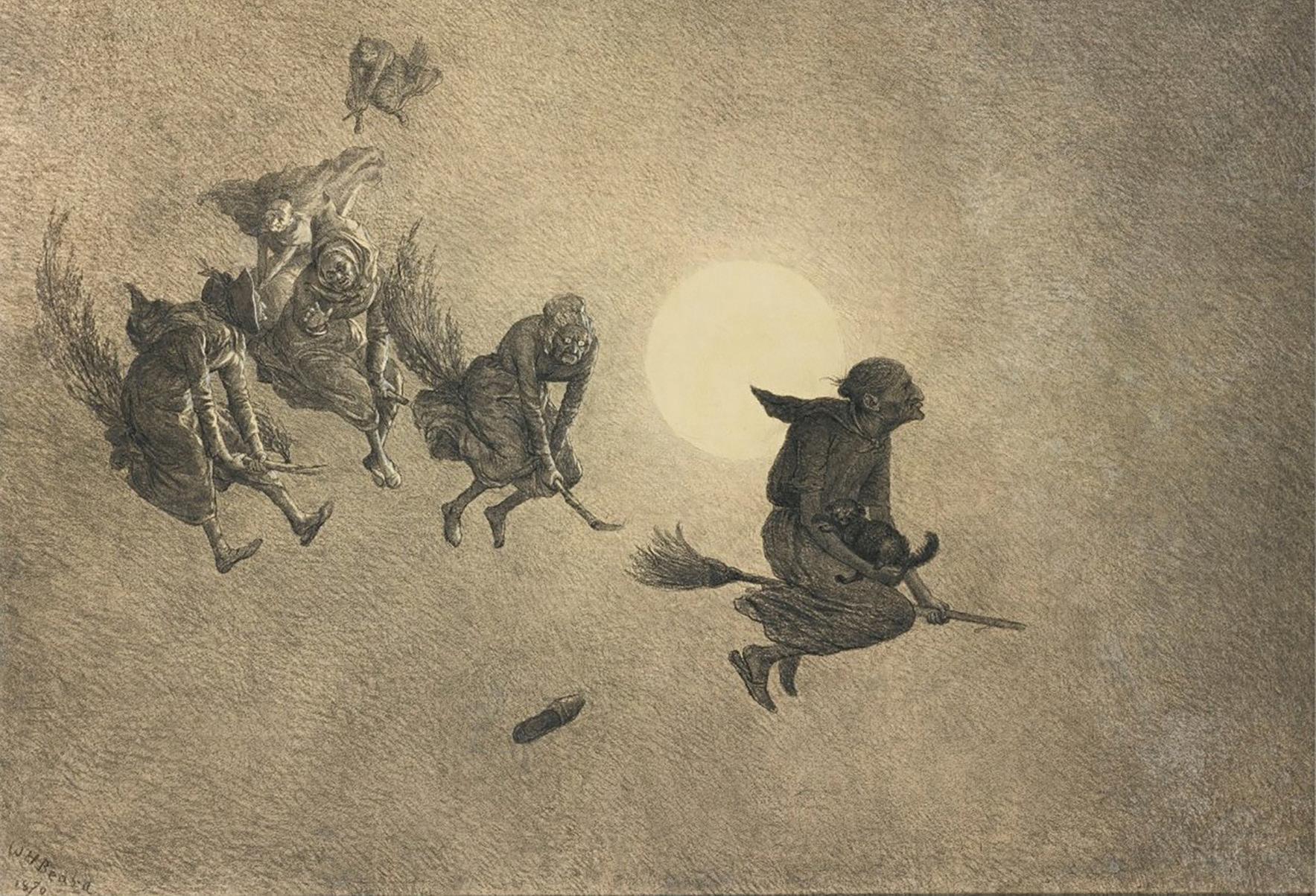
goers would play music and games, ask each other riddles, light warm fires and, of course, leave catnip in all the rooms of a house, except for where the body of the deceased lay. Anything to keep the sly obsidian kitty distracted!
On Samhain, farmers would leave saucers of milk out for the Cat Sìth to curry favor with the fairy. Those who forgot or refused risked a curse on their cows. In

another gruesome practice, which involved burning the bodies of cats over four days, participants sought to summon a demonic Cat Sìth called Big Ears, who would then grant a wish to all who took part in the ritual.
Sources suggest that the lore behind this fantastical creature may have been inspired by the Kellas cat. Once considered cryptids, Kellas cats are an interspecific hybrid of Scottish wildcats and domestic black cats that can grow up to three or four feet long. Named after the village
of Kellas, these big cats achieved notoriety in the early 1980s when a series of specimens were caught and trapped by local gamekeepers. While none are reported in captivity, mounted specimens of the oversized black cat are on view at museums in Elgin and Aberdeen.
FORTUNE FAVORS THE BLACK CAT
The belief that black cats signify misfortune is far from universal. In many places around the world,
PHOTO BY JAVIER ESTEBAN
86 PURR — ISSUE NO.1


87PURR — ISSUE NO.1


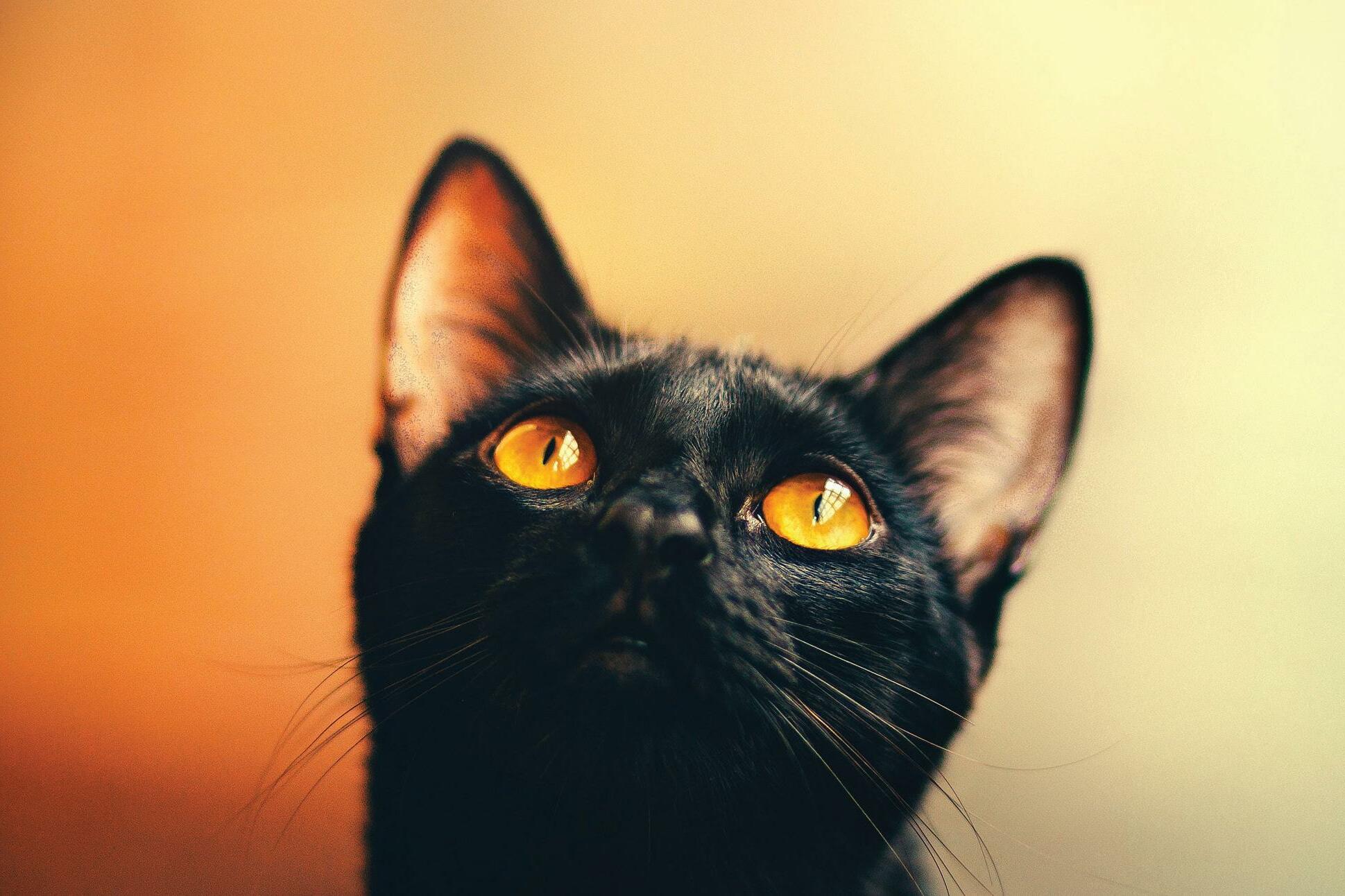 PHOTO BY HELENA LOPES
PHOTO BY HELENA LOPES
THE MATAGOT CAN MAKE ITS OWNER WEALTHY , BUT ONLY IF SHOWN SPECIAL COURTESIES.
88 PURR — ISSUE NO.1
the presence of a midnight mouser represents luck and protection against evil.
In England, black cats bring joy and prosperity to newlyweds, foretelling long, happy marriages. They’re said to make fortuitous wedding gifts, should you tire of buying blenders or monogrammed linens. One jubilant account from The Morning Post in 1927 tells of a blessed bride-to-be who spotted a black cat on the steps of the church, at the hotel door, the hall, the reception, and just about everywhere else she went on her wedding day. In a 1926 photograph from The Daily Mail, the granddaughter of a famous cricketer prominently featured a black cat in her wedding photos as a guest of honor.
Look beyond the recently betrothed to the weary wives of
English fishermen. Often, these women kept black cats at home as tokens of luck to ensure their husbands’ safe return from sea. Similarly, sailors also sought black cats to keep on board as a “ship’s cat“ for good fortune and protection against evil. This belief became so popular that the cost of black cats skyrocketed, making them a treasured commodity at home as well as on the open seas.
French lore, too, shines an auspicious light on the black cat with the matagot , a spirit also known as a magician or money cat. The matagot can make its owner wealthy, but only if shown special courtesies. As the story goes, to capture your own matagot, you must tempt the creature with a delicious meal — a fresh, plump chicken is recommended —
then carry it home without ever looking back. As long as the matagot receives the first bite of every meal and a warm bed to sleep in, it will reward you with gold coins and good luck. Be warned, however, that any disrespect or mistreatment of this cat results in disaster for the owner.
Head east and the veneration of black cats continues unabated. In the Edo period of Japan, some superstitions state that black cats cure tuberculosis. Iconic fortune cats, or maneki neko, bring good luck and life successes, but black fortune cats also ward off demons, evil energy, and stalkers. Similar to English beliefs around black cats and happy marriages, a single woman in Japan can attract a number of suitors — the fine, attractive kind, no less — if she keeps a black cat.
Bearing the head of a black cat and the body of a woman, the ancient Egyptian deity Bastet served as a goddess of war and fertility.
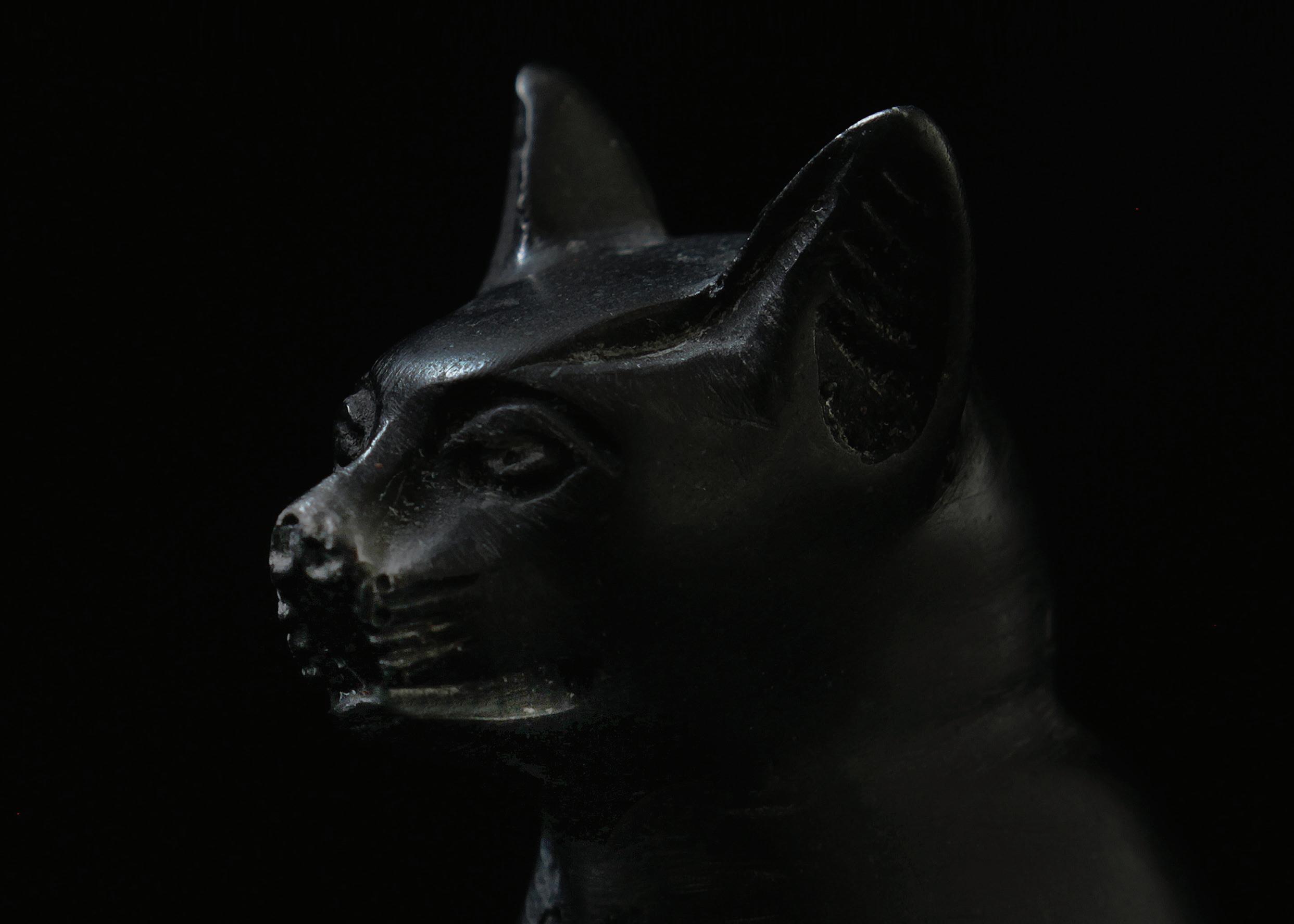
89PURR — ISSUE NO.1

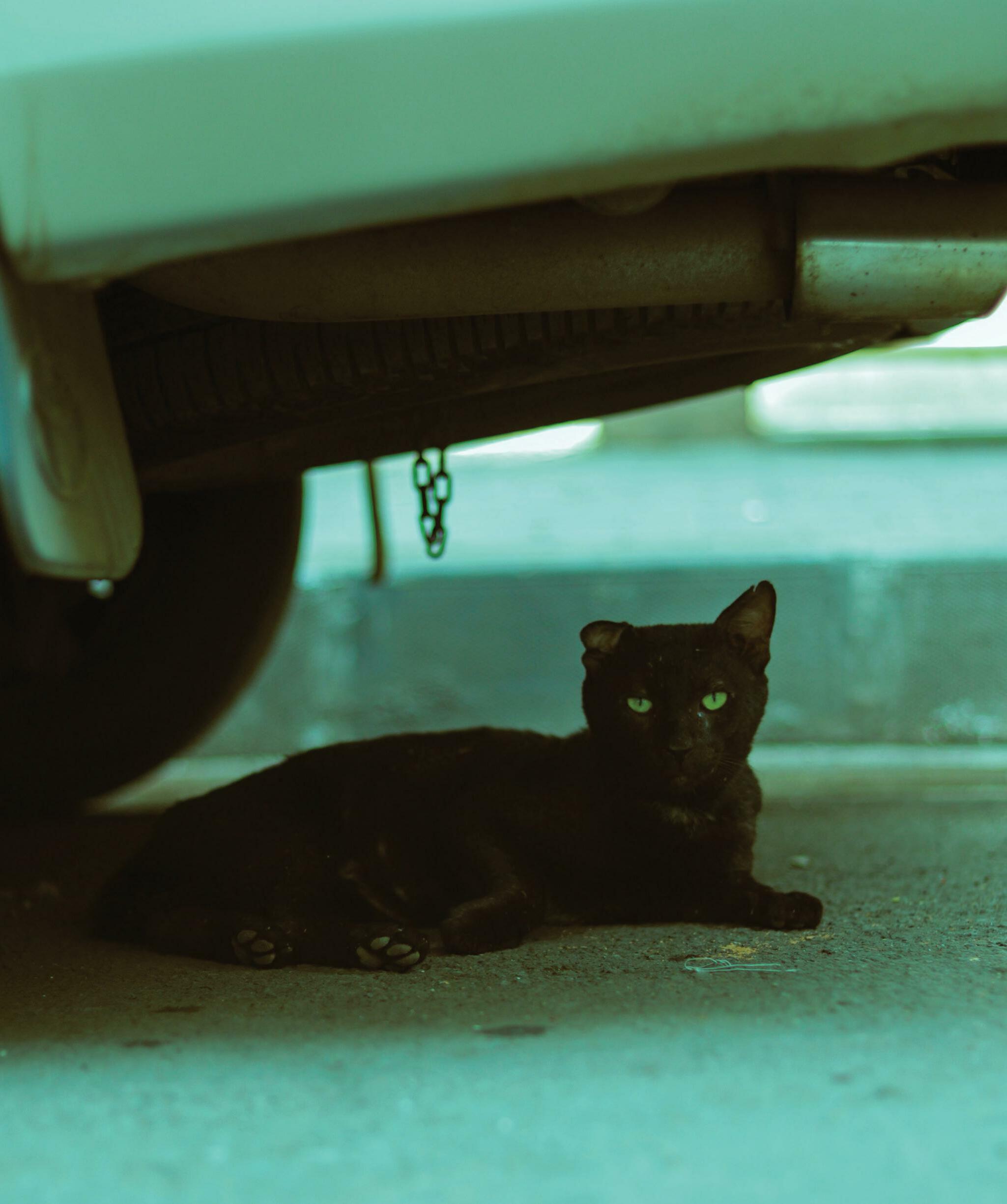 PHOTO BY YOGESH
PHOTO BY YOGESH
RAHAMATKAR 90 PURR — ISSUE NO.1
IT’S UNSURPRISING THAT THEY BECAME CONNECTED IN THE CHRISTIAN LORE AROUND WITCHCRAFT.

MYTH
Dive into comparative mythologies and you’ll discover a handful of cats, especially in connection to goddesses. Both beings disdain the authority of others. Both possess traits that contribute to their mystery and power — they’re aloof, discerning, charming. It’s a wonder any goddess ever chooses an animal other than the cat to accompany her or represent her spirit.
In Egyptian mythology, the goddess Bastet bears the head of a black cat. Daughter of Ra and Isis, sometimes called “the eye of the moon,“ she protected Lower Egypt and defended the king. She was also the goddess of pregnancy and childbirth, often depicted with kittens and widely regarded as a good mother.
Sometimes identified with Bastet, the Greek goddess Artemis was said to appear in the form of a cat. In some myths, Artemis saves the daughter of Agamemnon by turning her into Hecate, the
goddess of the moon, magic, and witchcraft. Notably, Hecate kept a black cat as a pet and familiar, underscoring the black cat’s association with the occult. One story goes that Hecate’s black cat was originally a serving maid, cursed by Hera for her insolence and transformed into a black cat as punishment. After her transformation, she became an assistant or priestess to Hecate, residing in the underworld, casting spells, and practicing magic.
BLACK CATS AND BLACK PLAGUE
Many modern superstitions around black cats originate from the 13th century, when Pope Gregory IX decreed that all cats should be exterminated — especially black cats, since they were incarnations of Satan.
Sources suggest that early Christians maligned women and cats so thoroughly because they shared personality traits frowned
upon by the church. Like the women accused of witchcraft, cats favor independence and intelligence. They don’t fawn or simper over anyone; affection must be earned. Since impertinence wasn’t welltolerated in either women or cats, it’s unsurprising that they became connected in the Christian lore around witchcraft.
Pope Gregory IX’s campaign against black cats had another, unforeseen effect. With fewer cats, the vermin population grew out of control. Because vermin were the main carriers of the Black Plague, this uptick contributed to an estimated 50 million deaths — or 60 percent of Europe’s total population at the time. Far from being the incarnation of Satan, black cats could have saved millions of lives.
From the supernatural to the superstitious, from love and wealth to death and misfortune, black cats have beguiled the people of this world throughout history.
91PURR — ISSUE NO.1
@luciaheffernanFEATURED ARTIST: LUCIA HEFFERNAN THEY CAN BE SO QUIRKY OR MYSTERIOUS OR MOODY, IT LEAVES A LOT OF ROOM FOR INTERPRETING THEIR STORIES. “ 92 PURR — ISSUE NO.1

93PURR — ISSUE NO.1
Lucia Heffernan
It’s human nature to relate animals to people, giving them detailed personalities and human traits. Artist Lucia Heffernan takes anthropomorphism to the next level with her wildly realistic portrayals of animals in uniquely human situations. The combination of Heffernan’s realism and theatrics is humorous while remaining remarkably believable. While fascinated with all animals, Heffernan relates to cats’ sarcastic and aloof nature, making them an easy subject for her work. “Because they can be so quirky or mysterious or moody, it leaves a lot of room for interpreting their stories,“ she says.
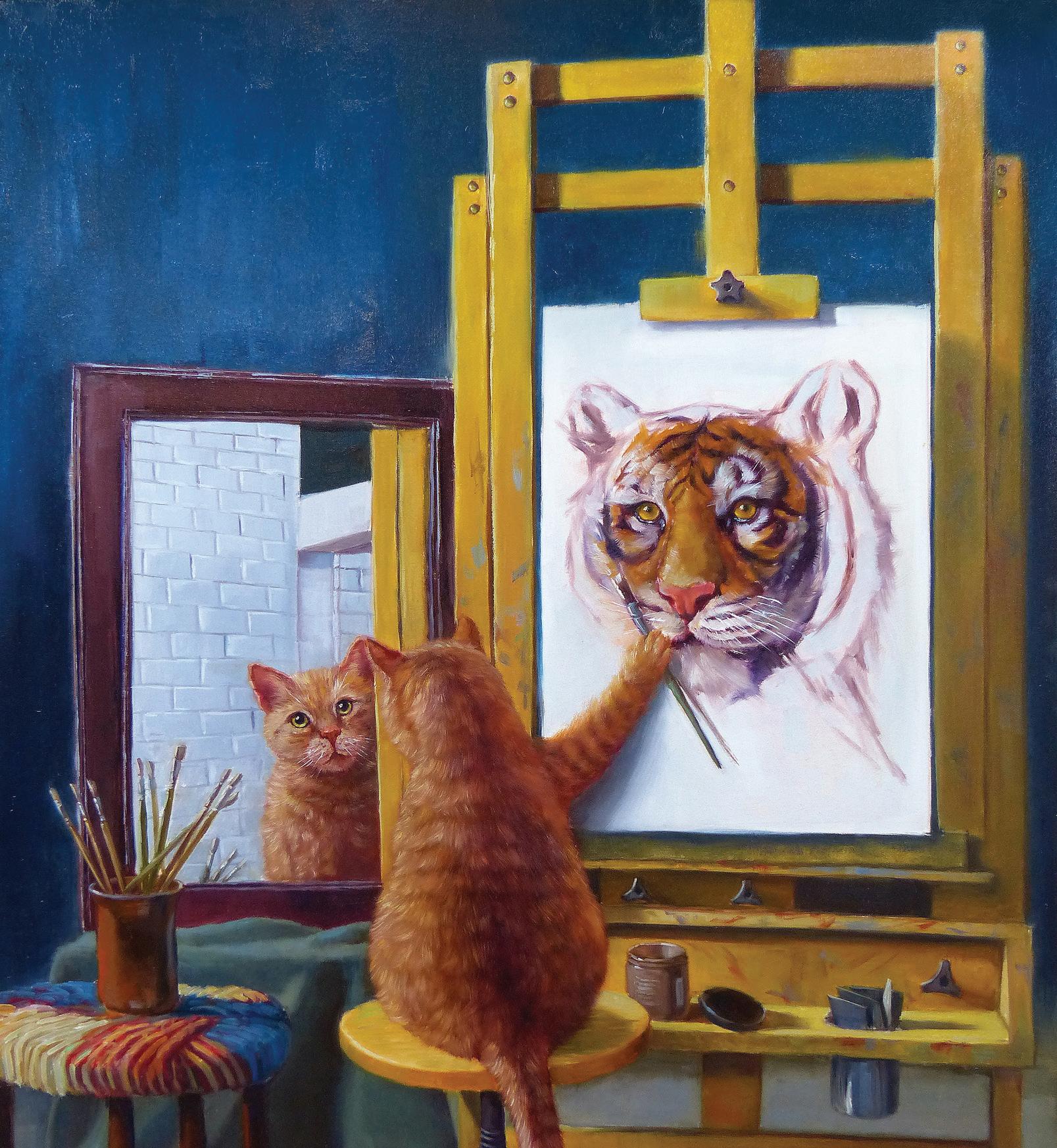

94 PURR — ISSUE NO.1

95PURR — ISSUE NO.1
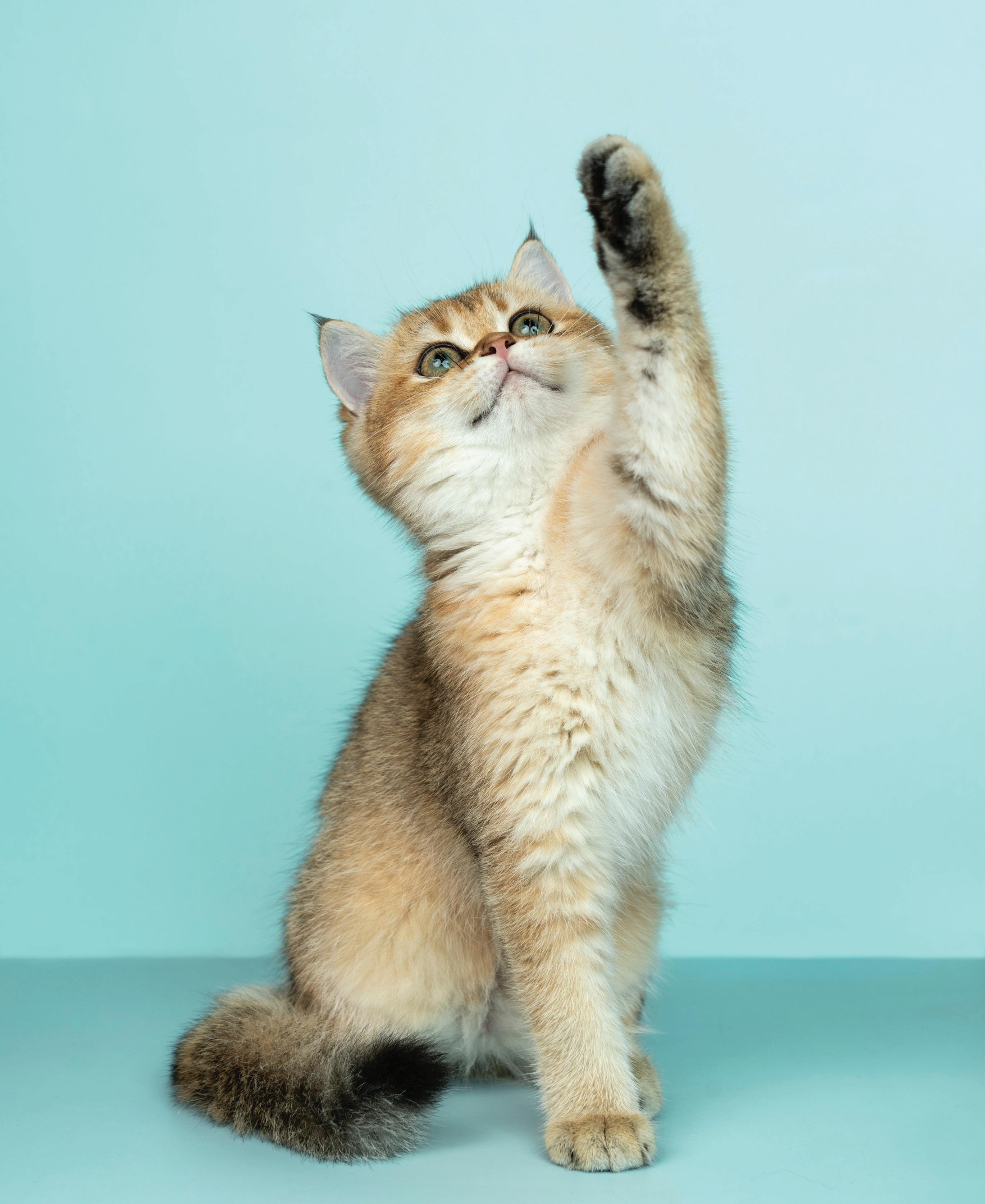
SHE’S DAMN NEAR PERFECT. SHE HAS THE FLUFFIEST TAIL. SHE’S AS SOFT AS A COTTON BALL. SHE WON’T STOP SLAPPING ME IN THE MOUTH.







FRESH MEAT, NEVER MEALS. GENTLY STEAM COOKED. GRAIN-FREE RECIPES.
 DAMN NEAR PERFECT CAT
DAMN NEAR PERFECT CAT
FOOD
